
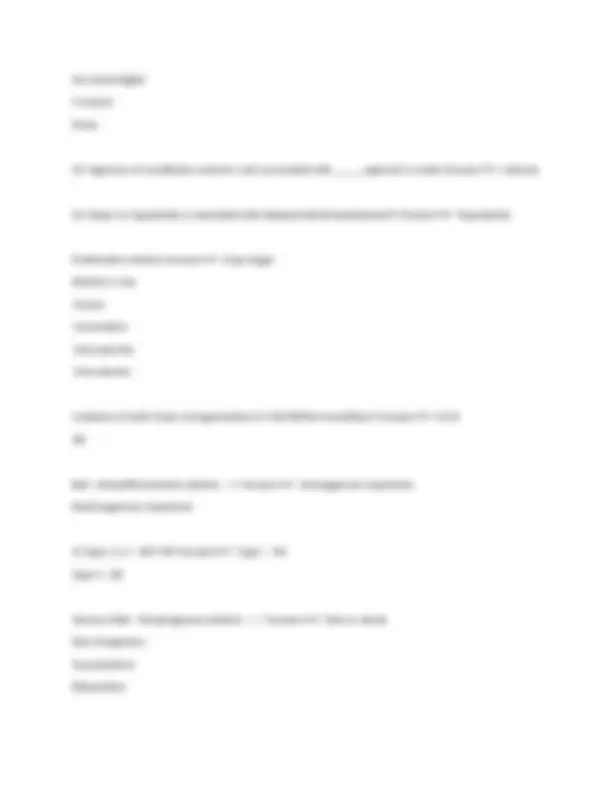
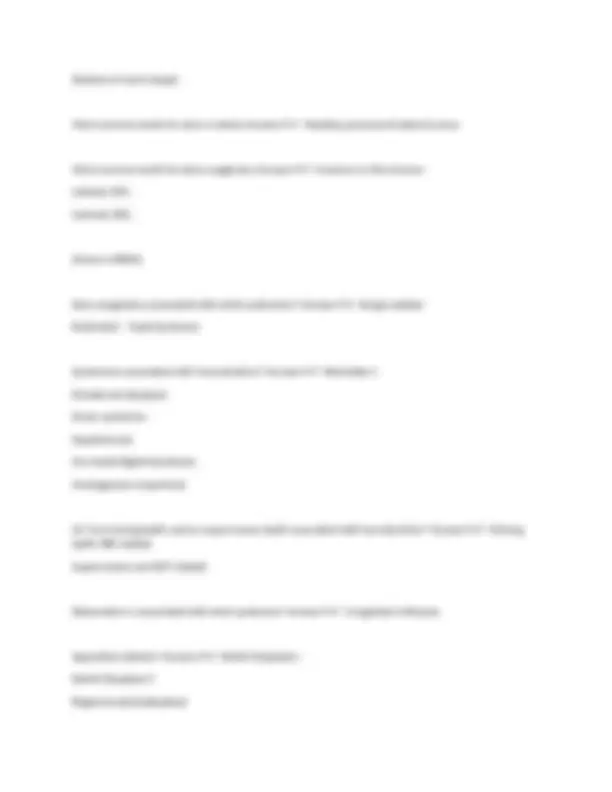
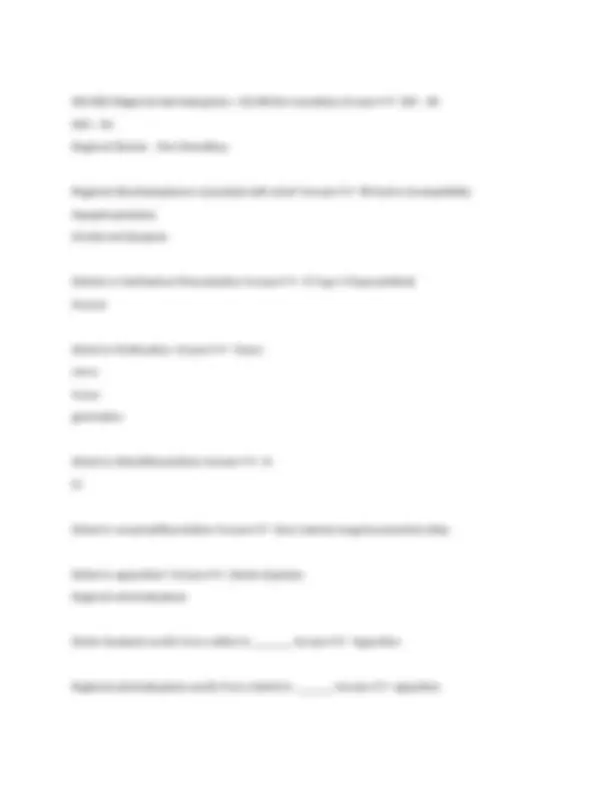
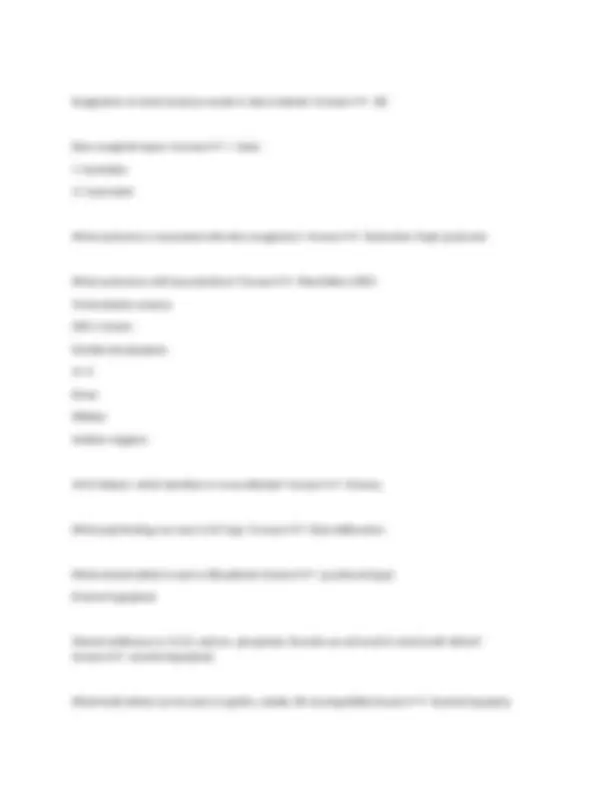
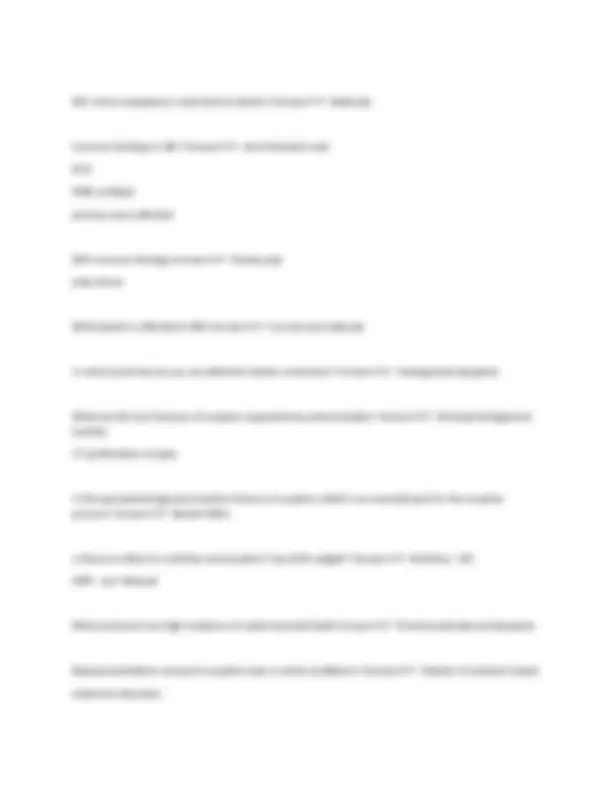
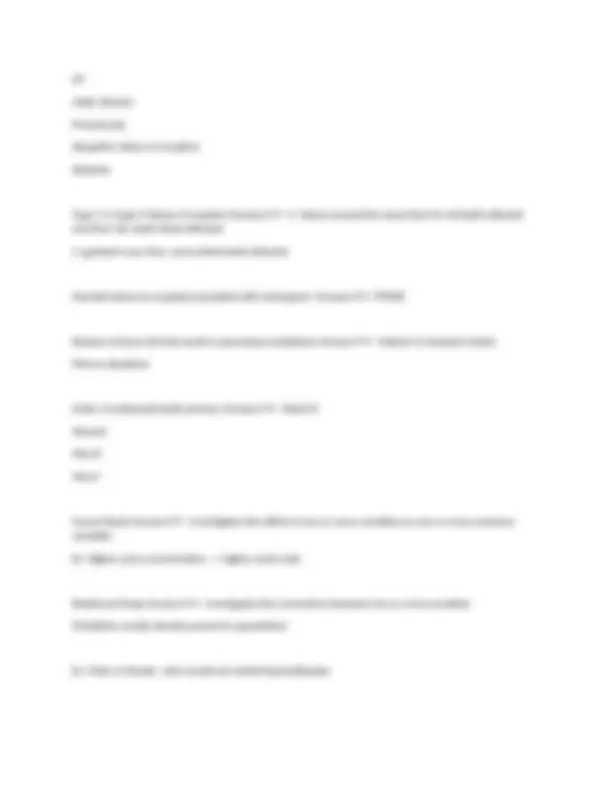
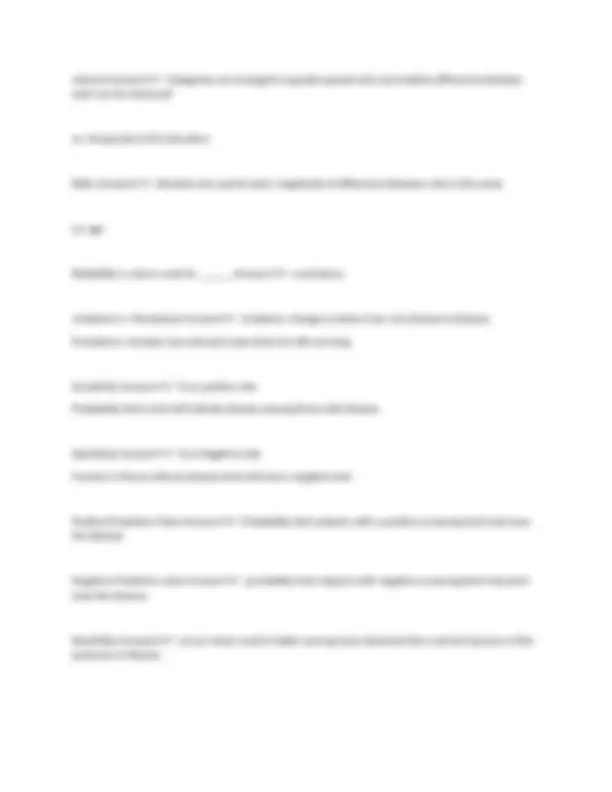
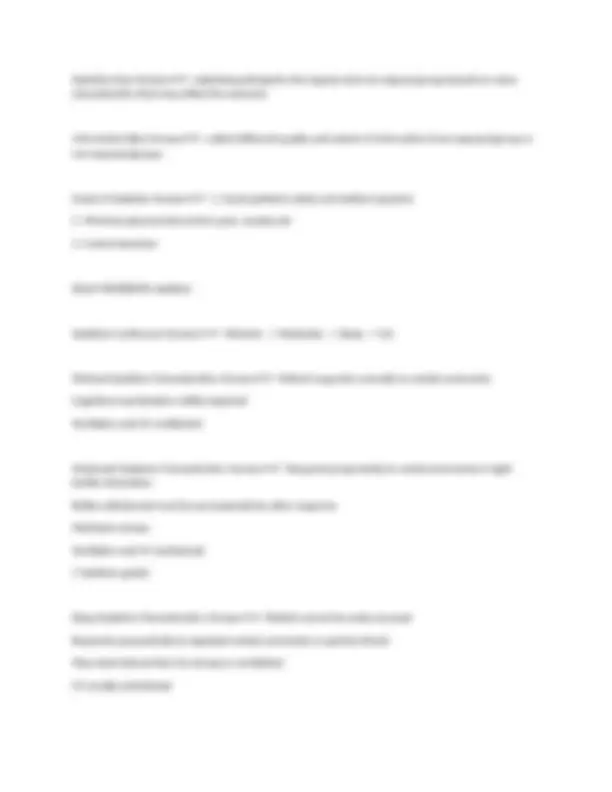
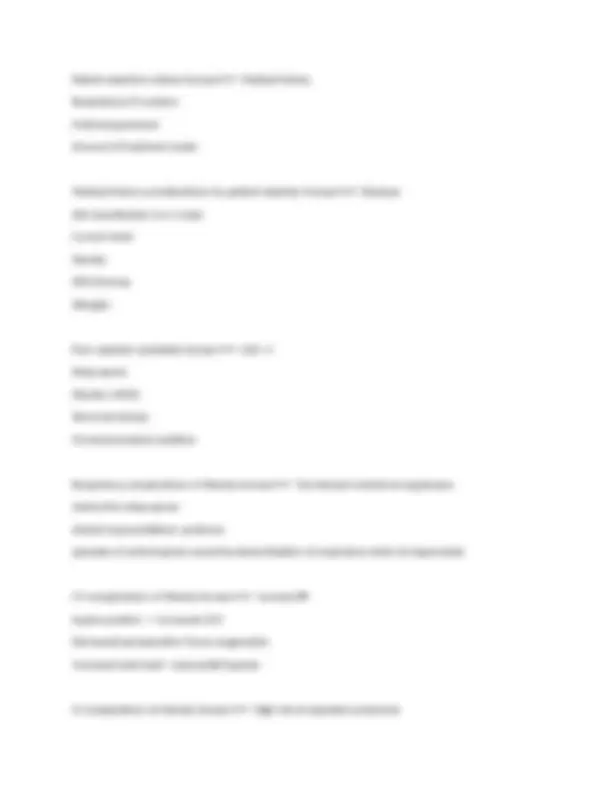
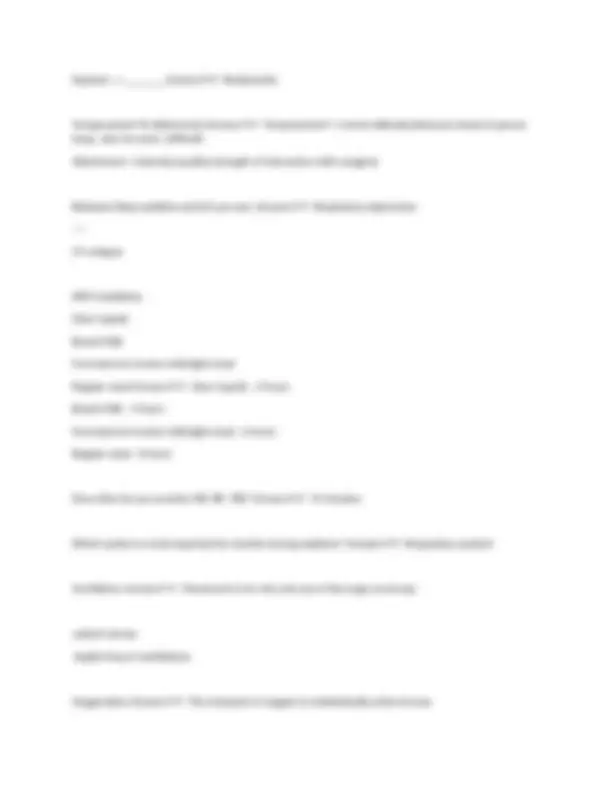
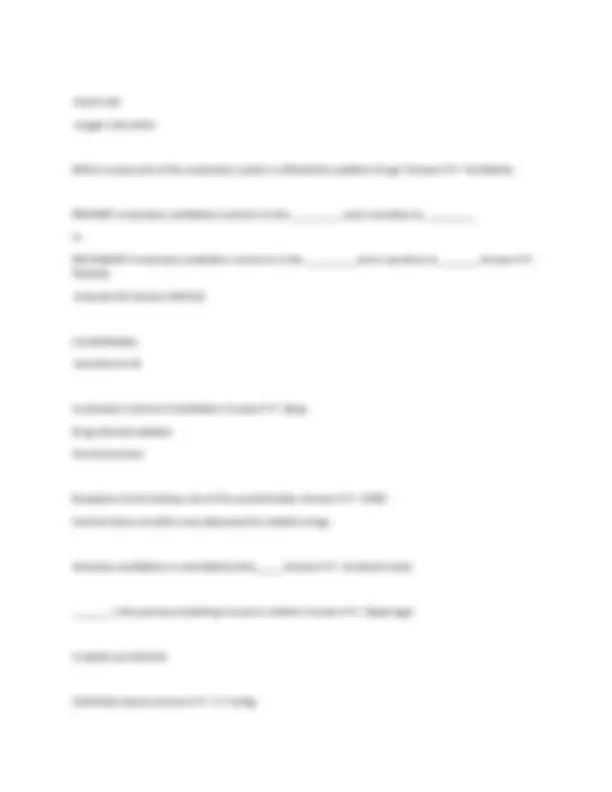

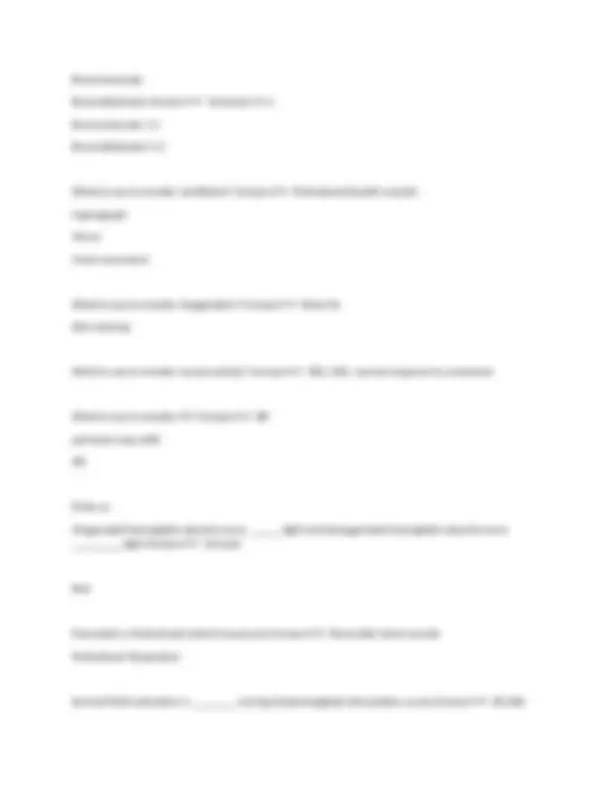

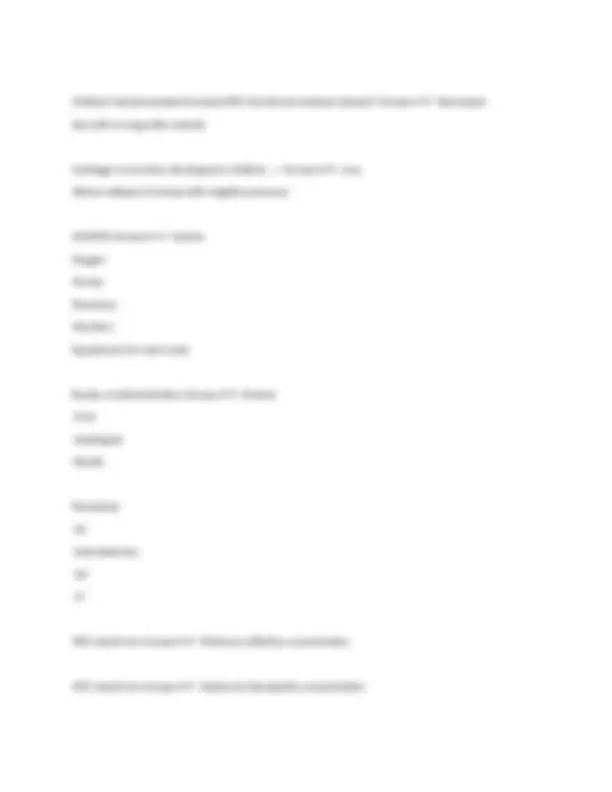
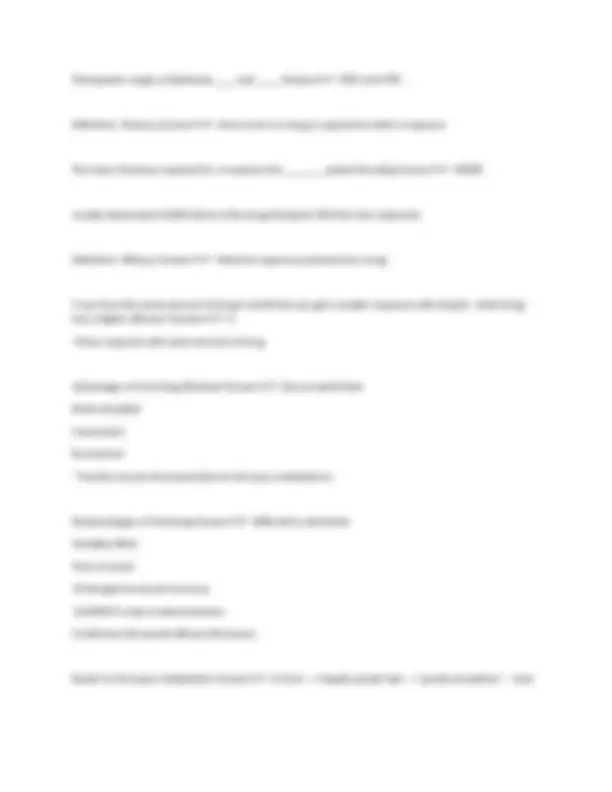
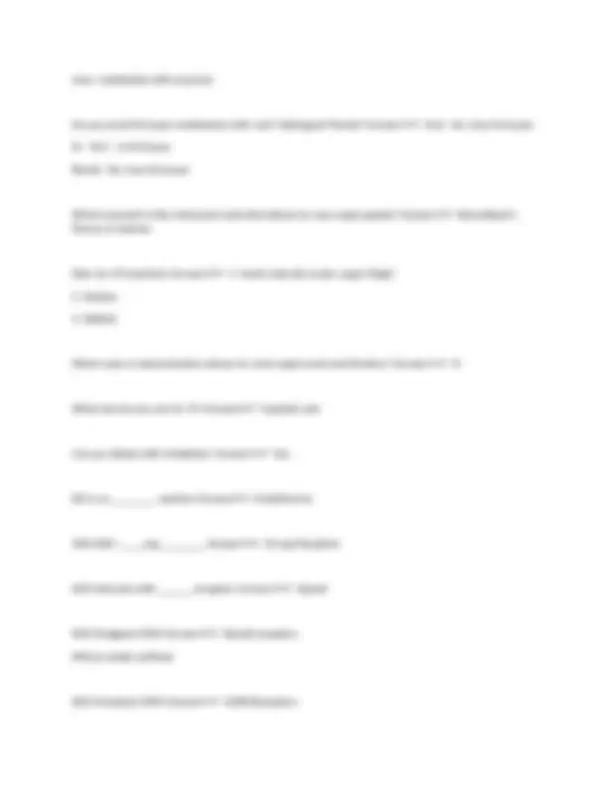
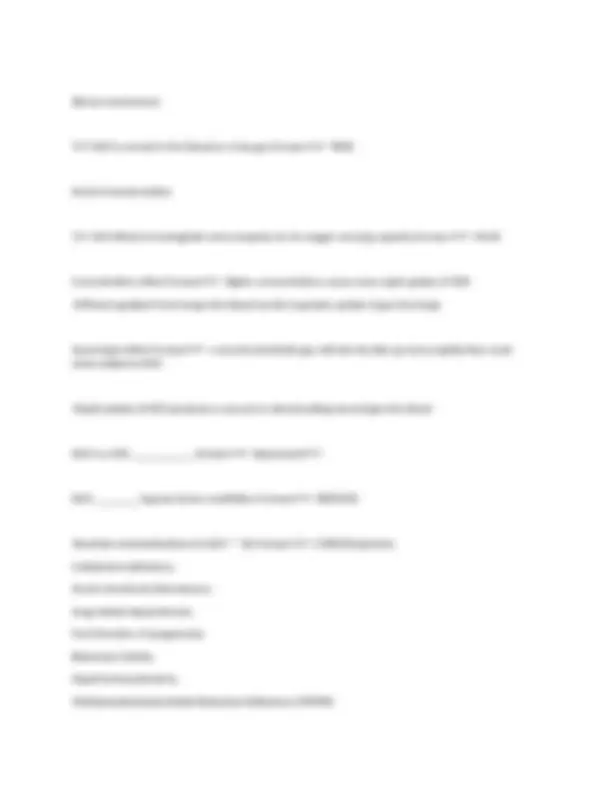
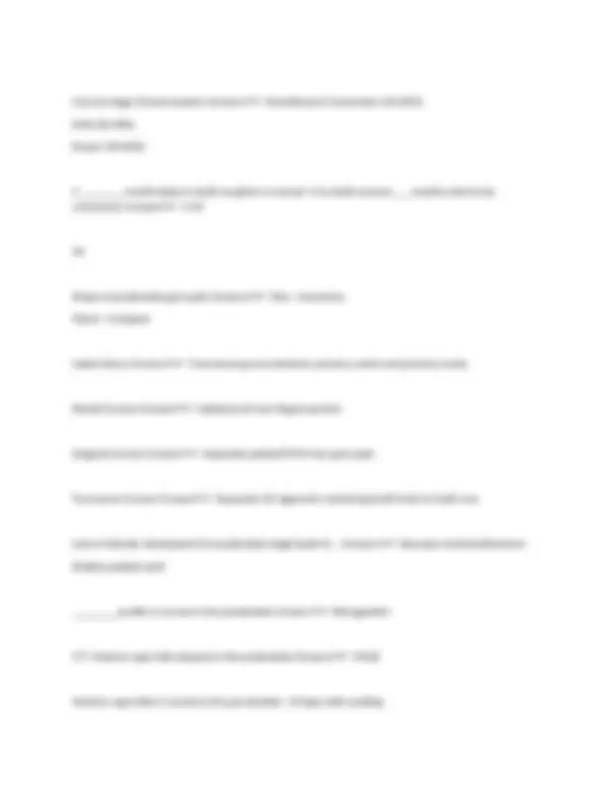
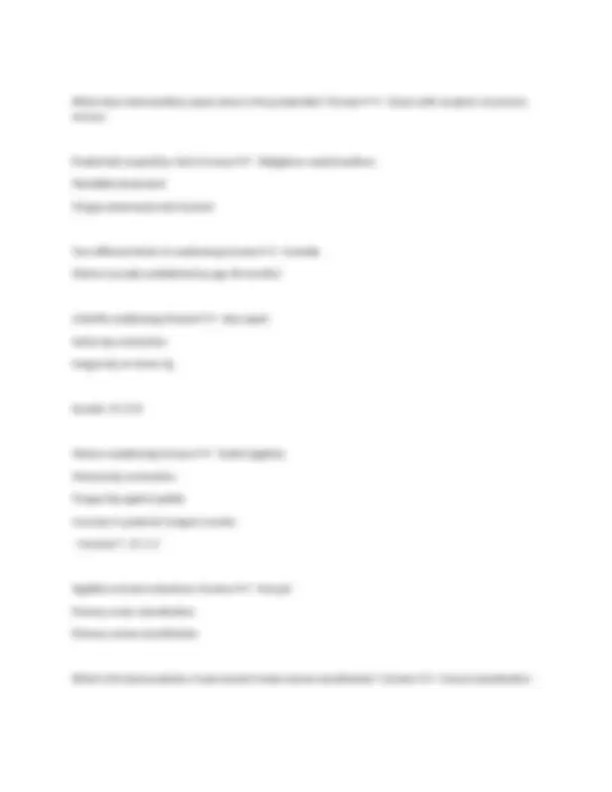
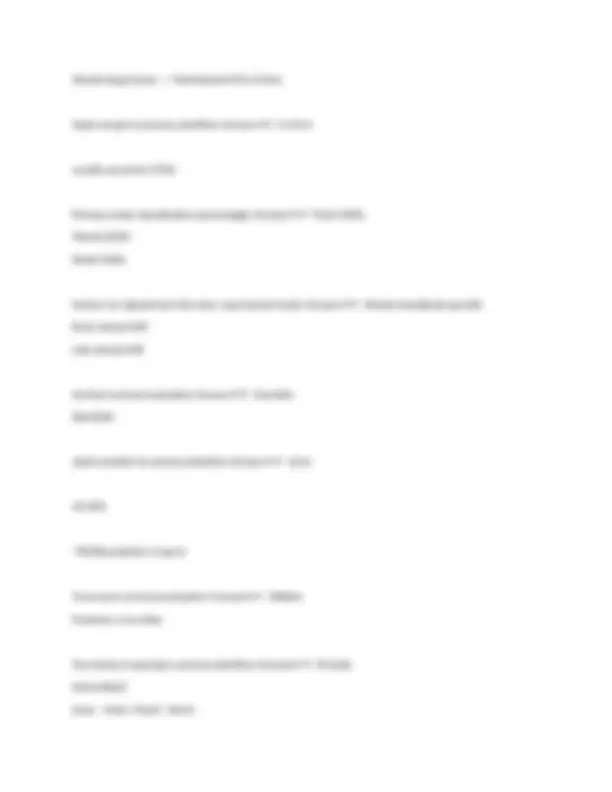
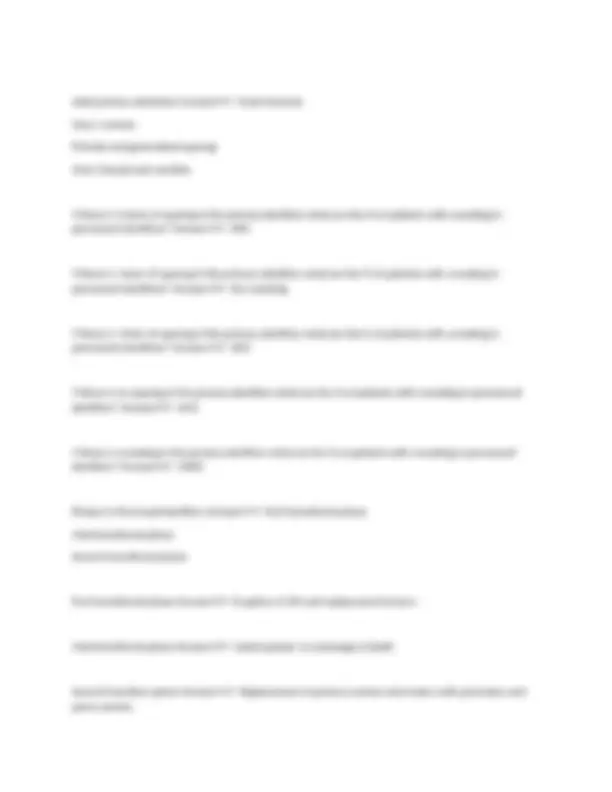
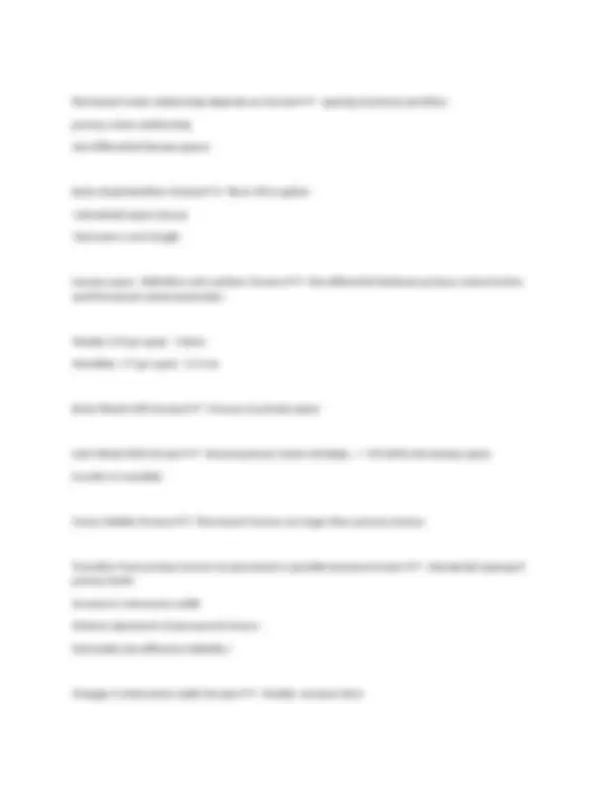

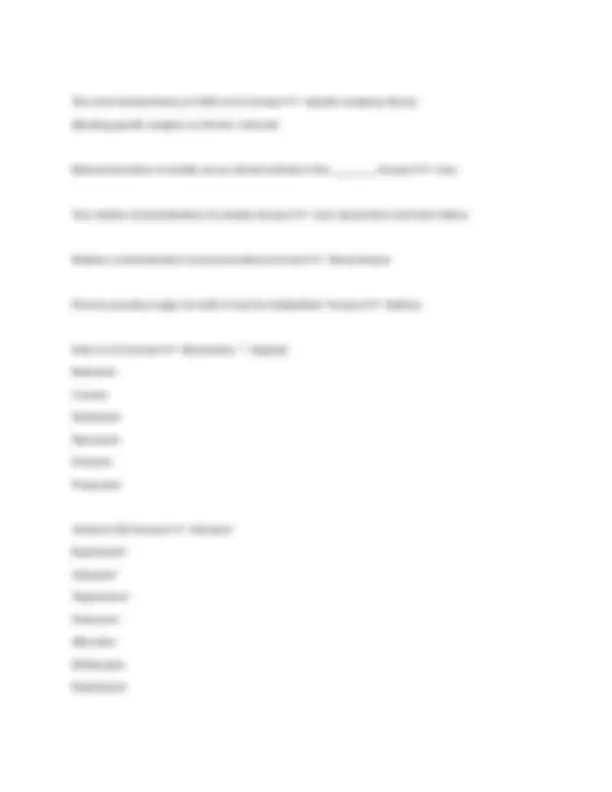
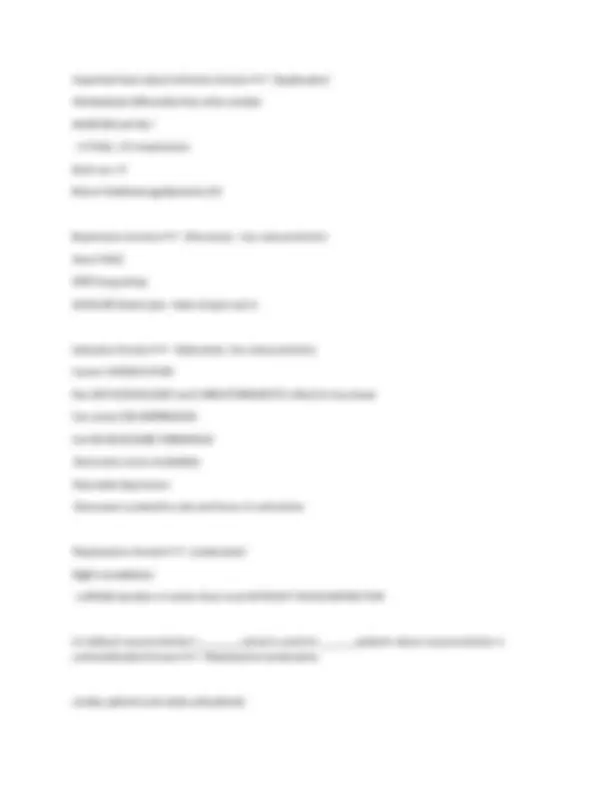
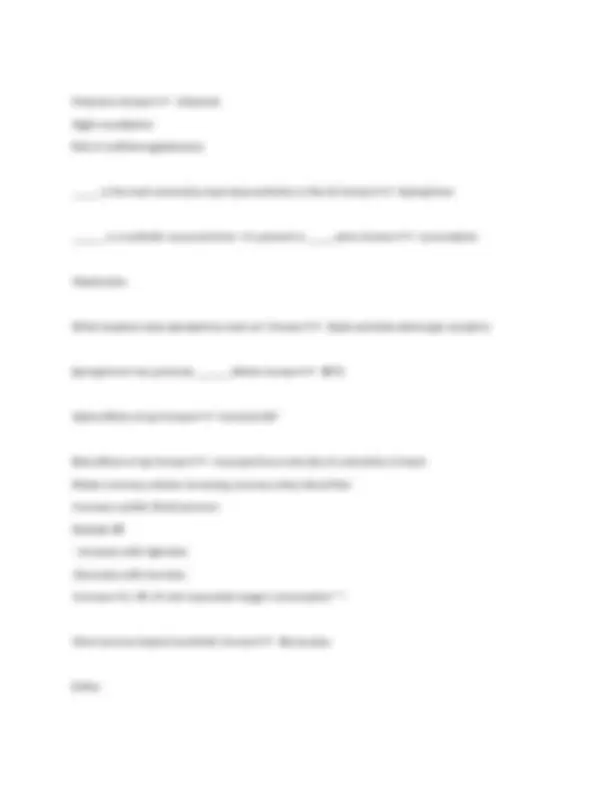
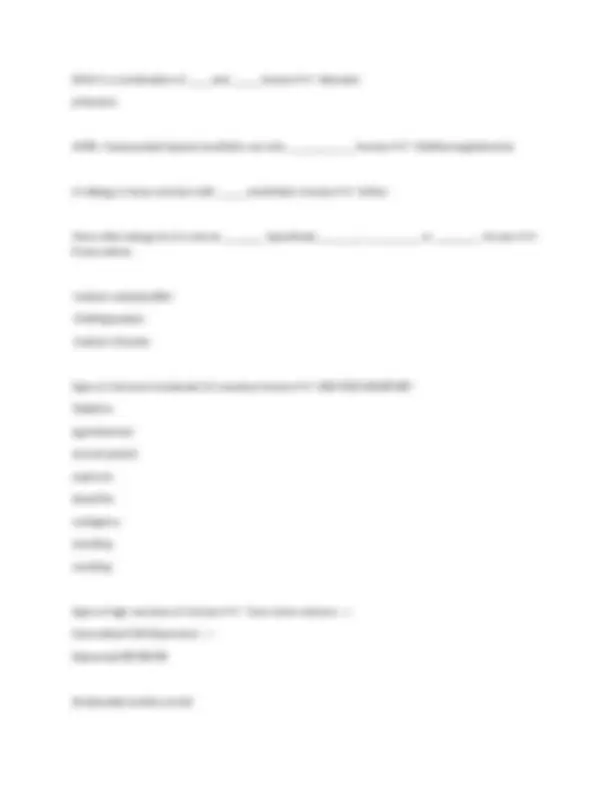
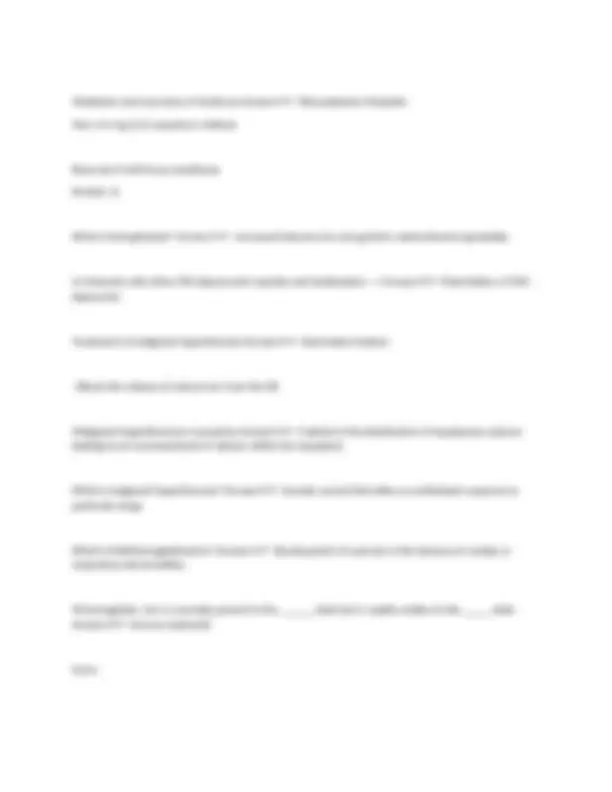


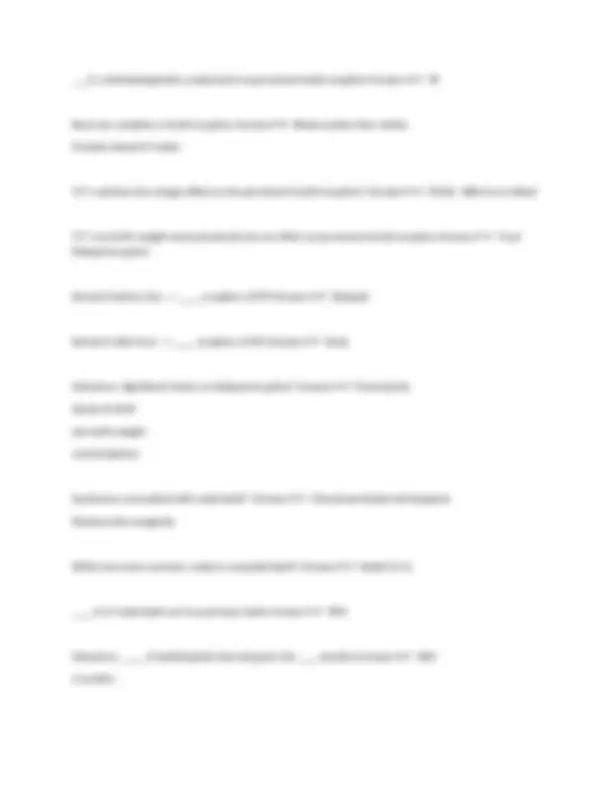
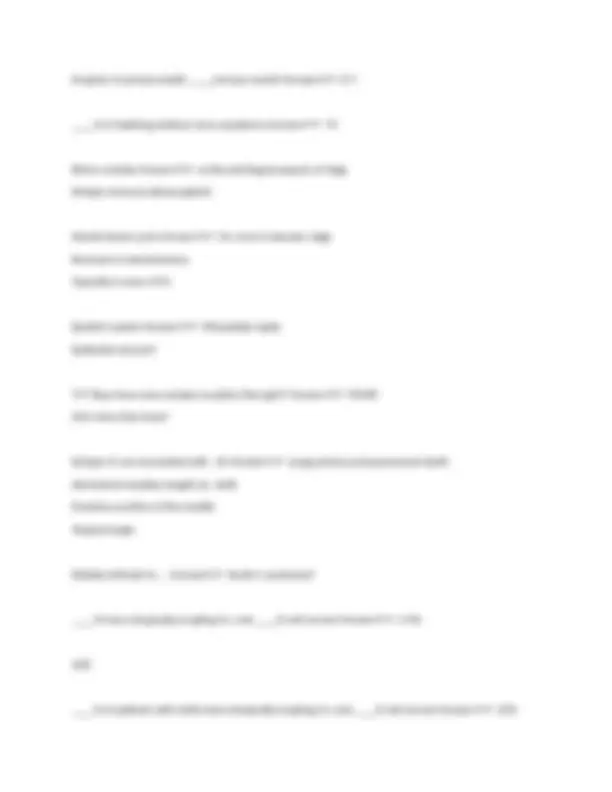
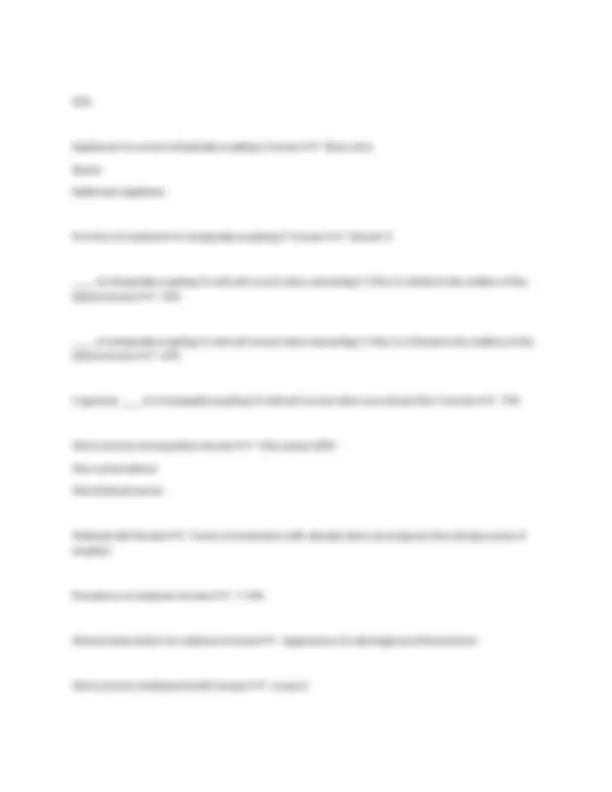
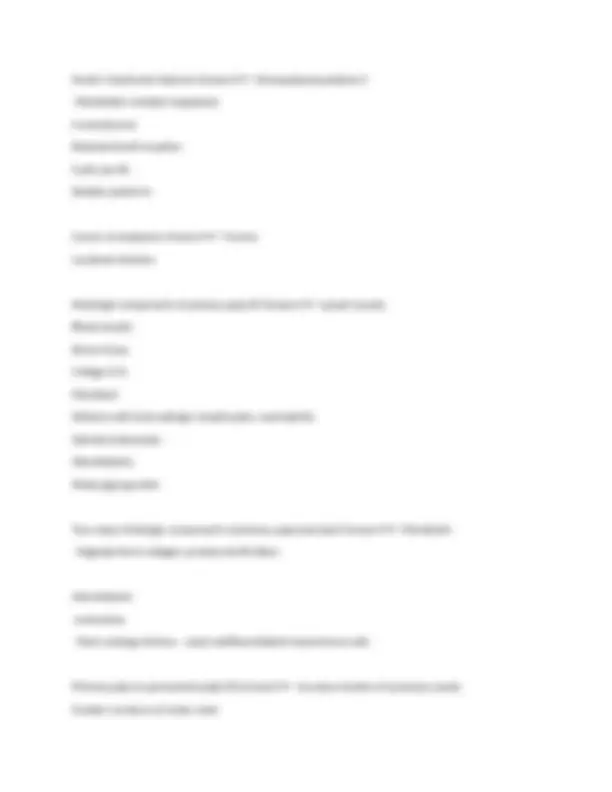
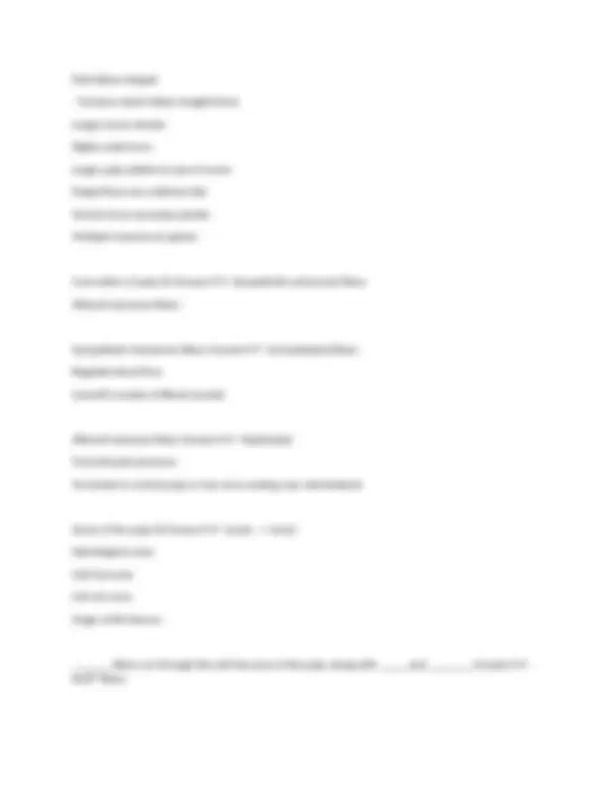
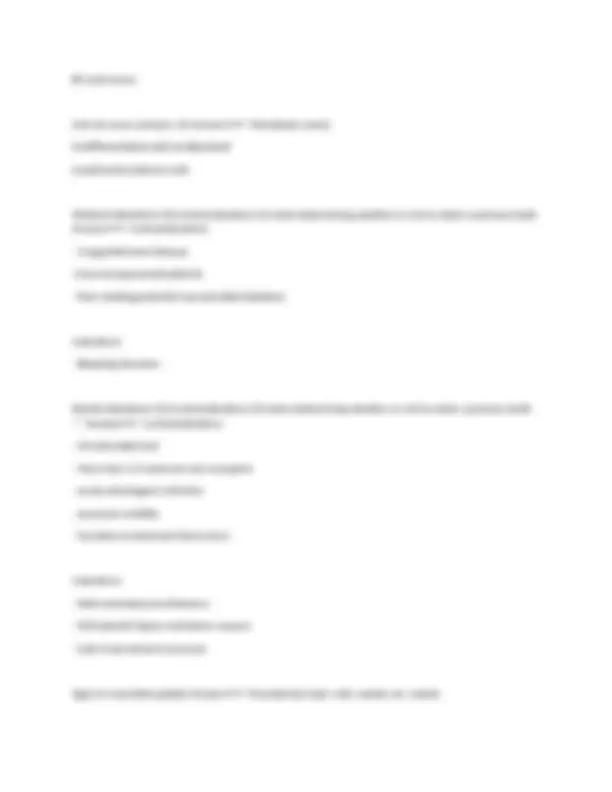

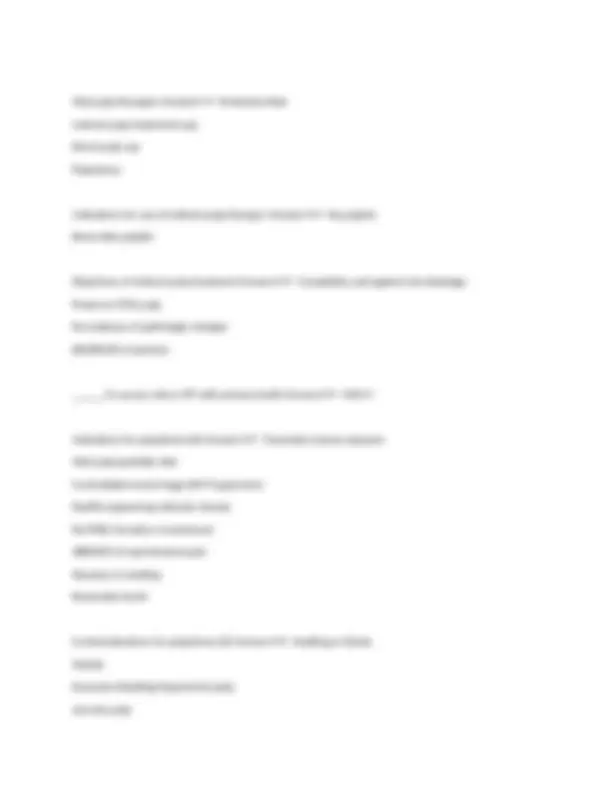
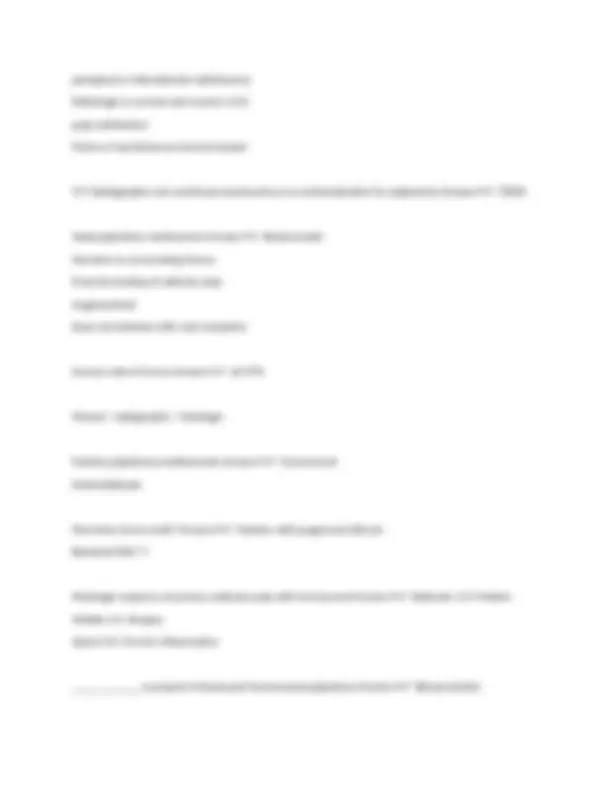
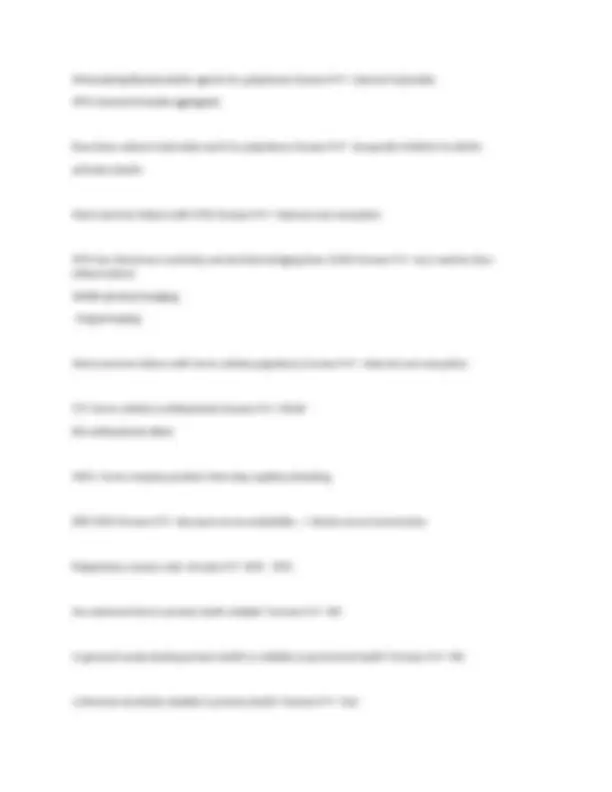
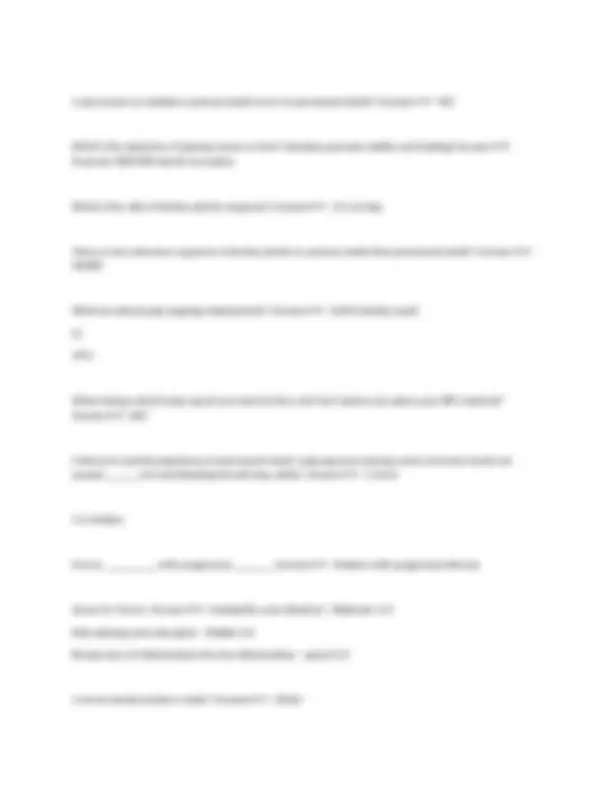
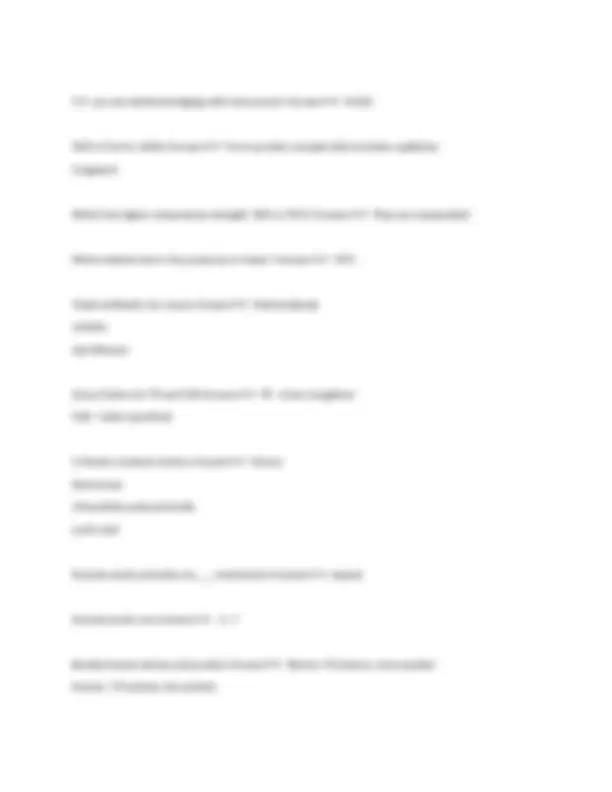
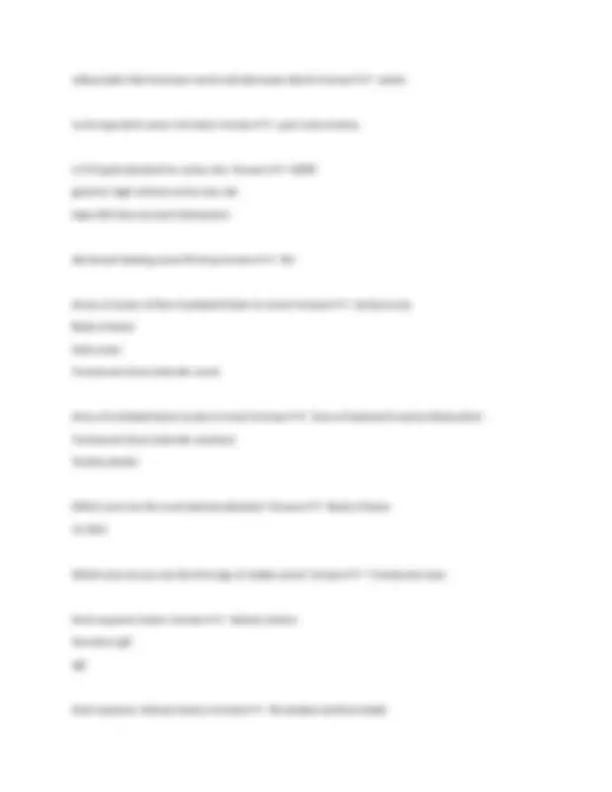

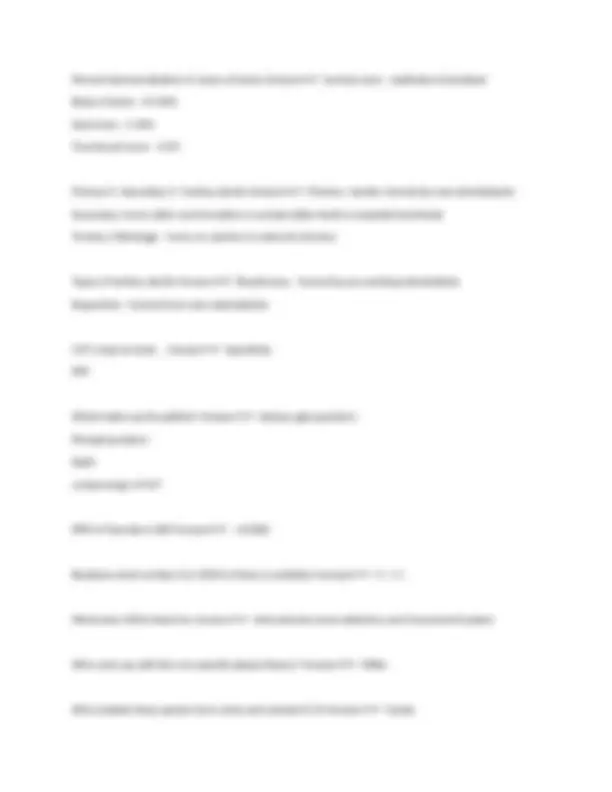
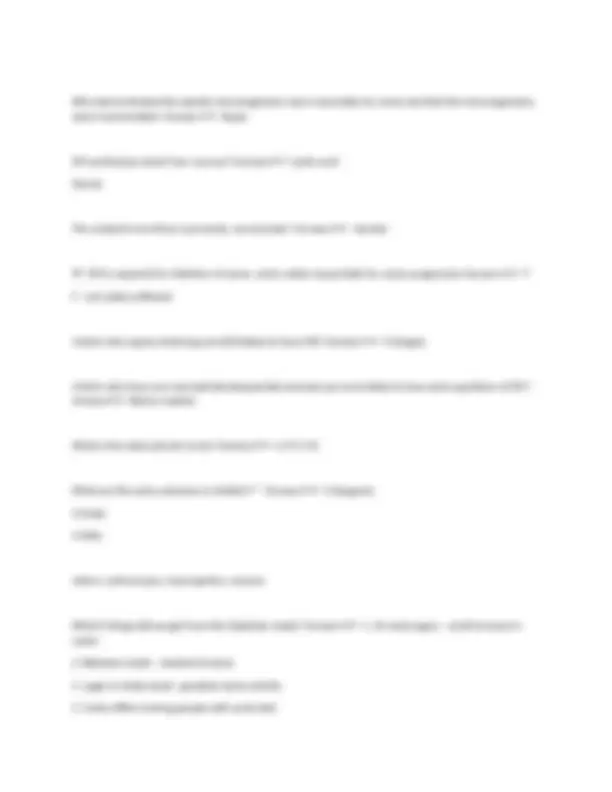
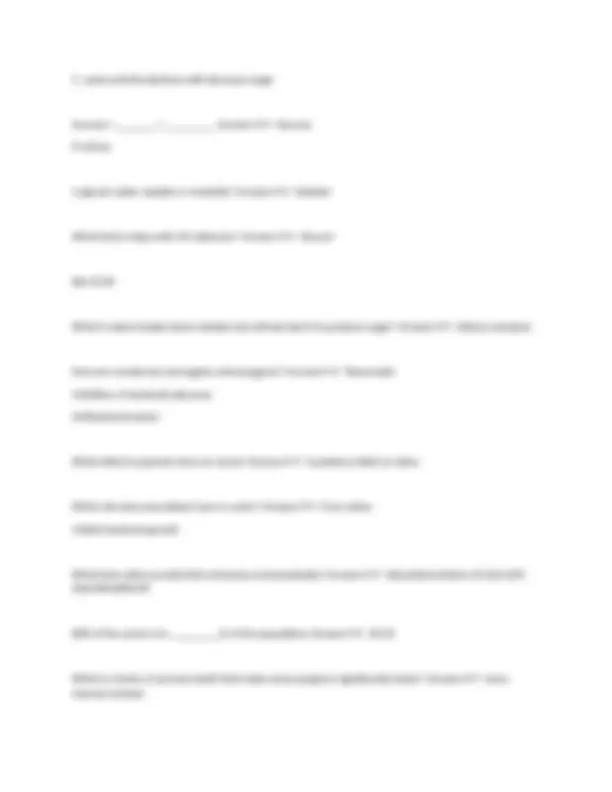

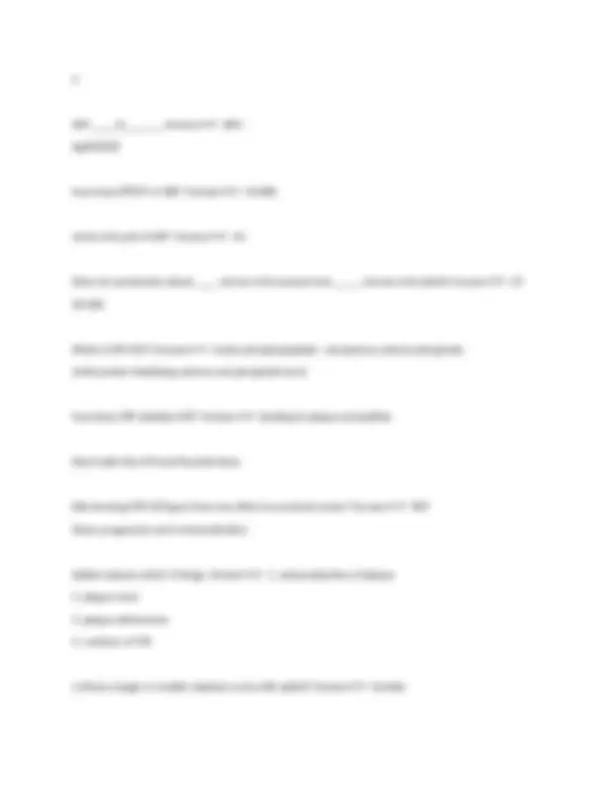
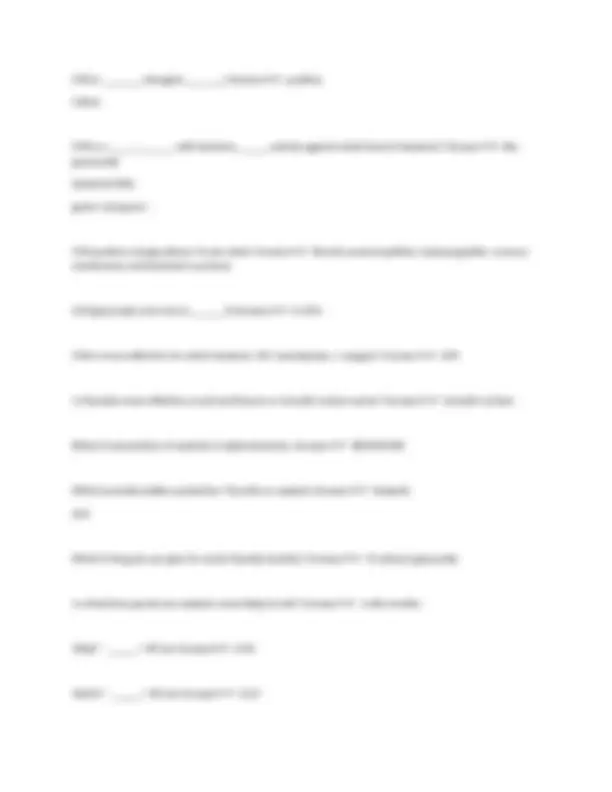

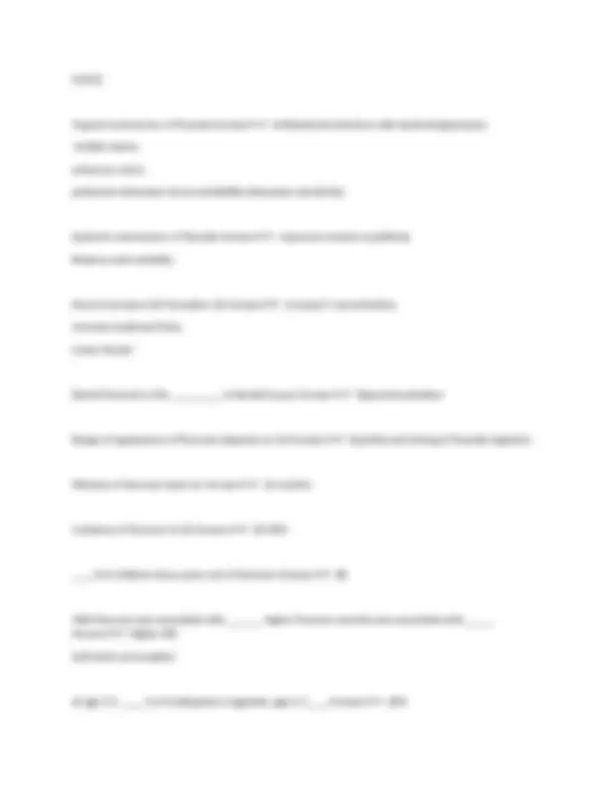




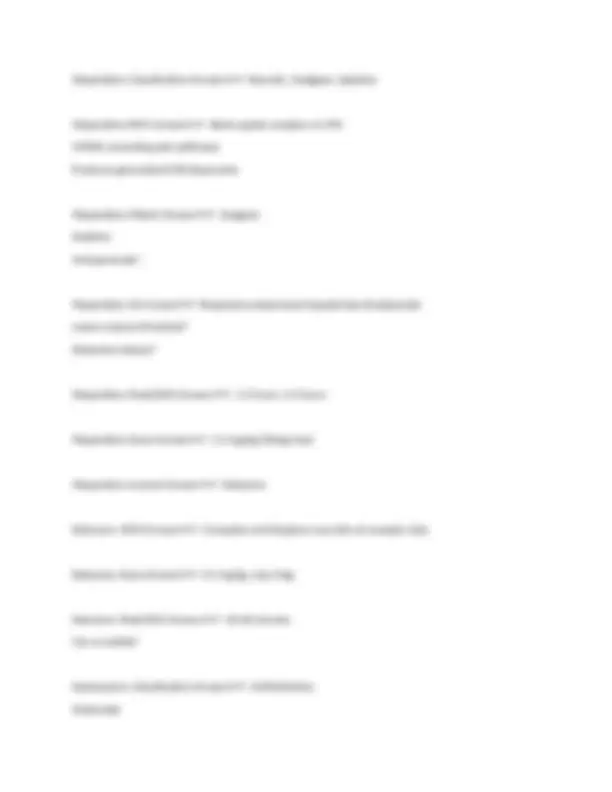
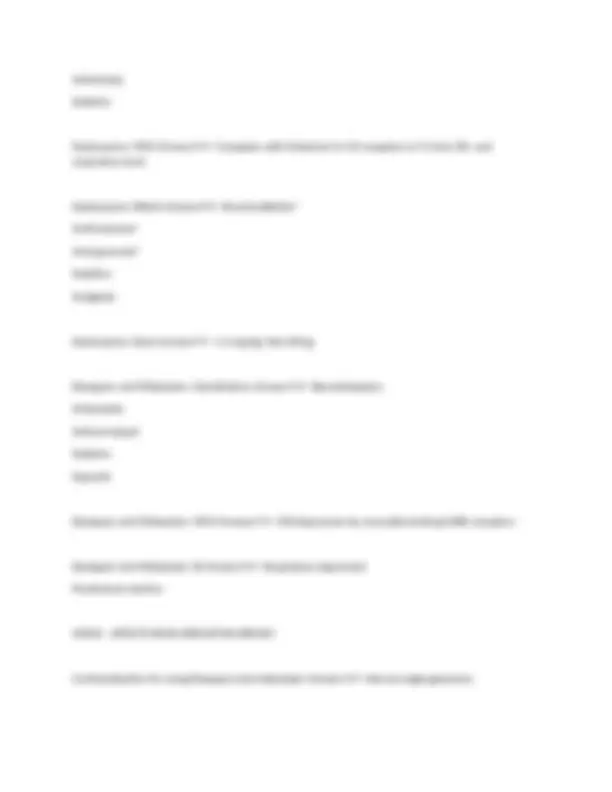
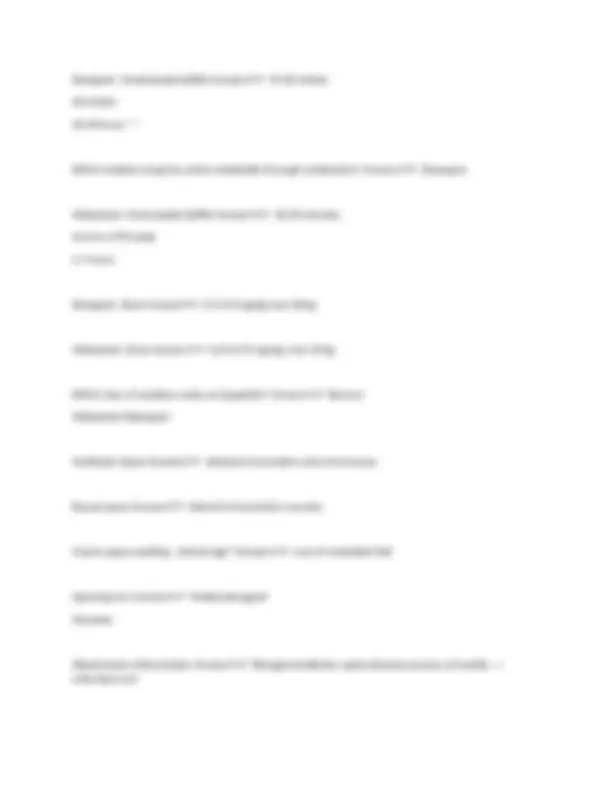

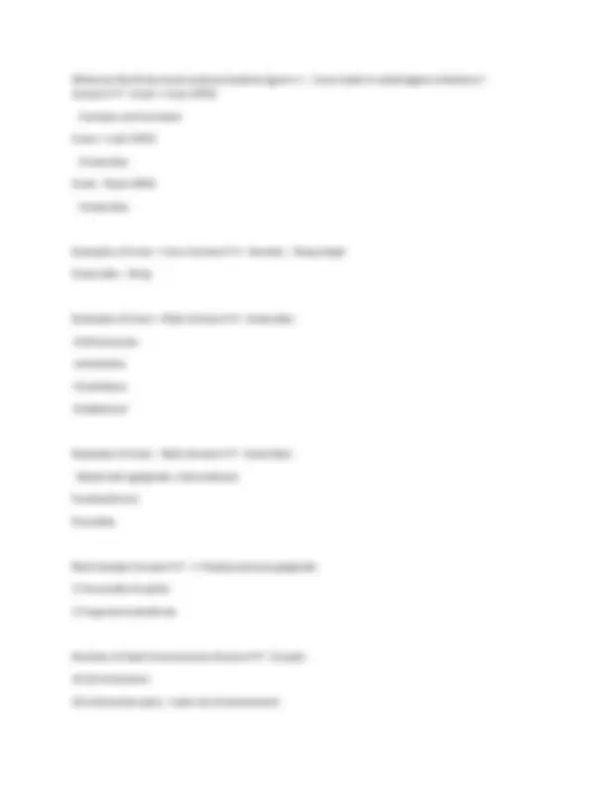
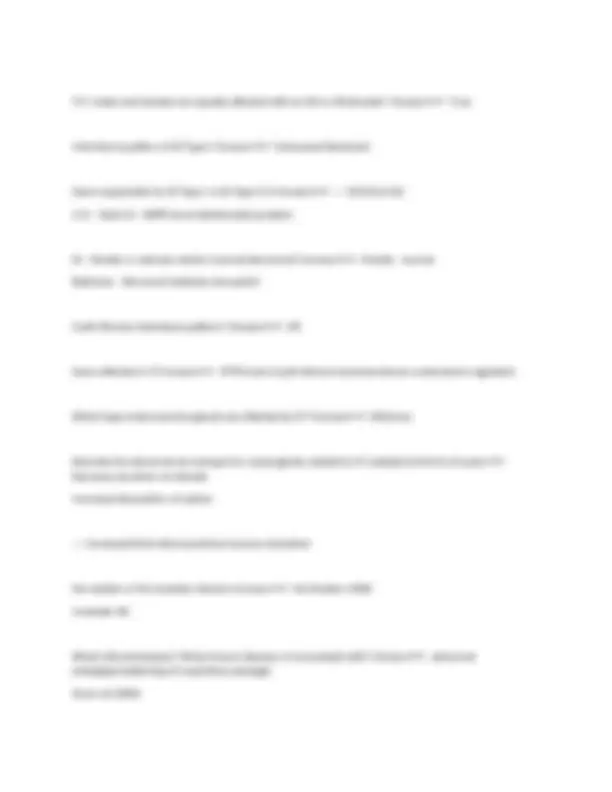
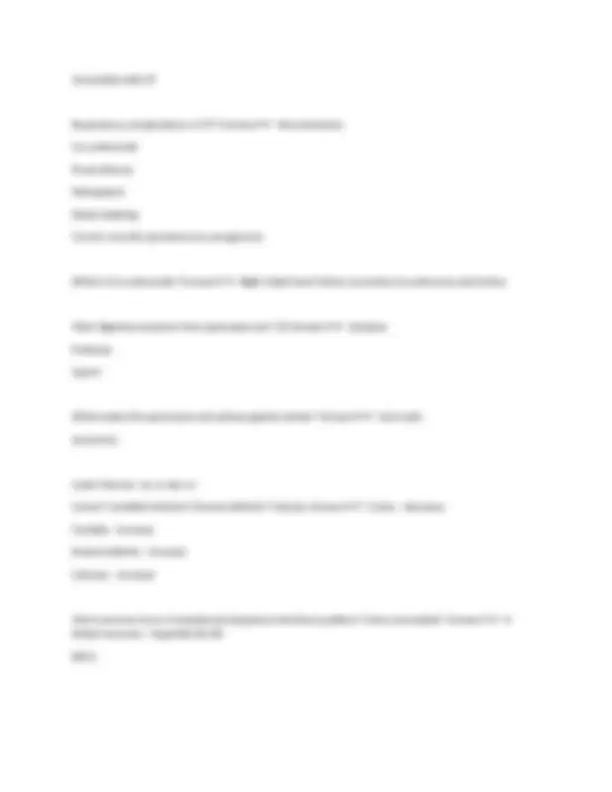
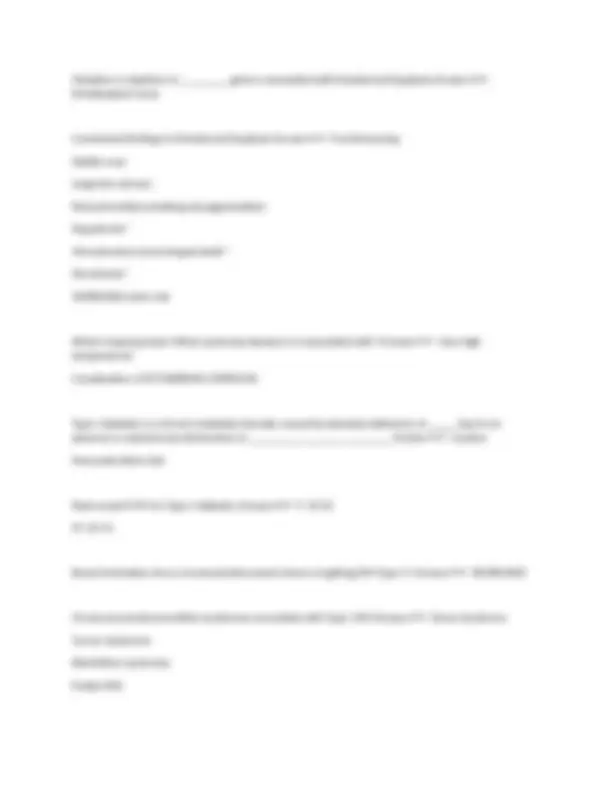
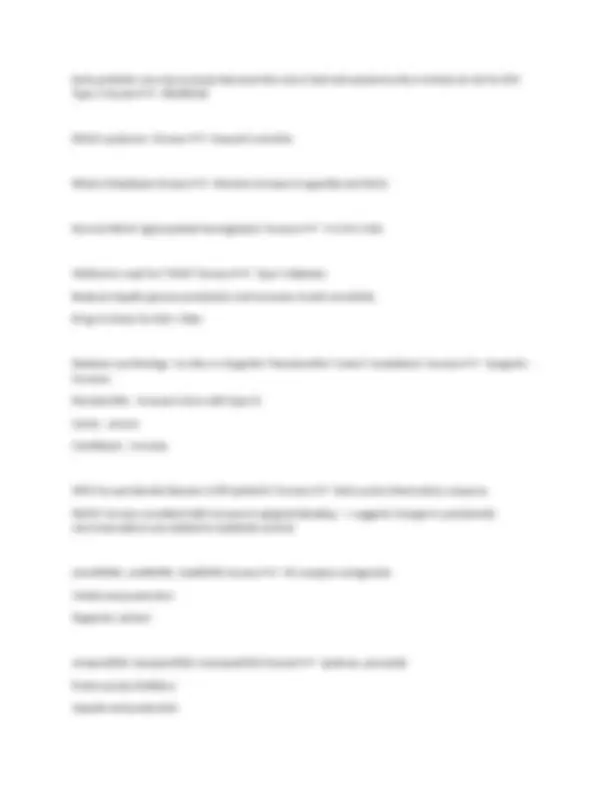
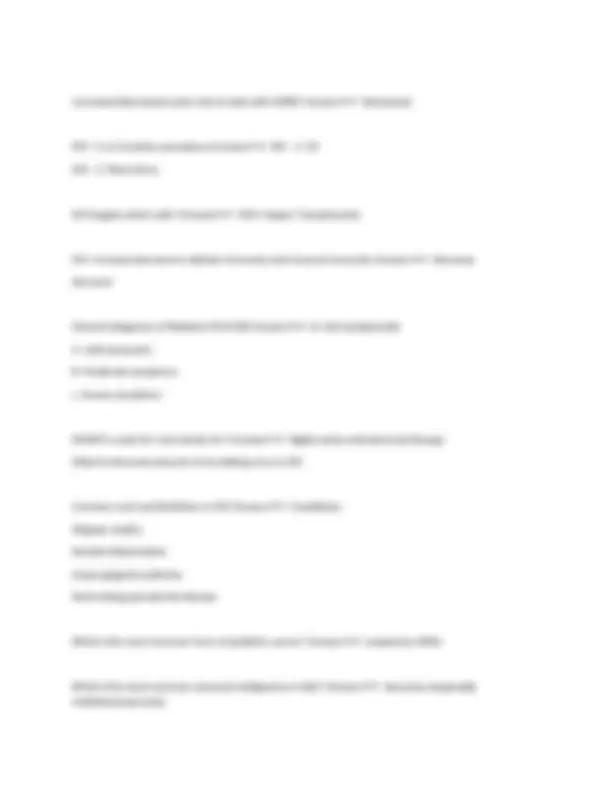
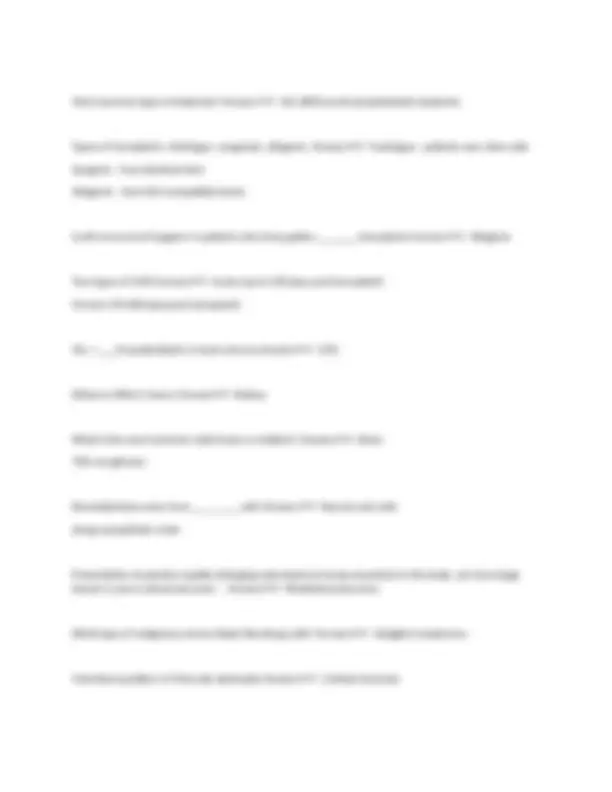
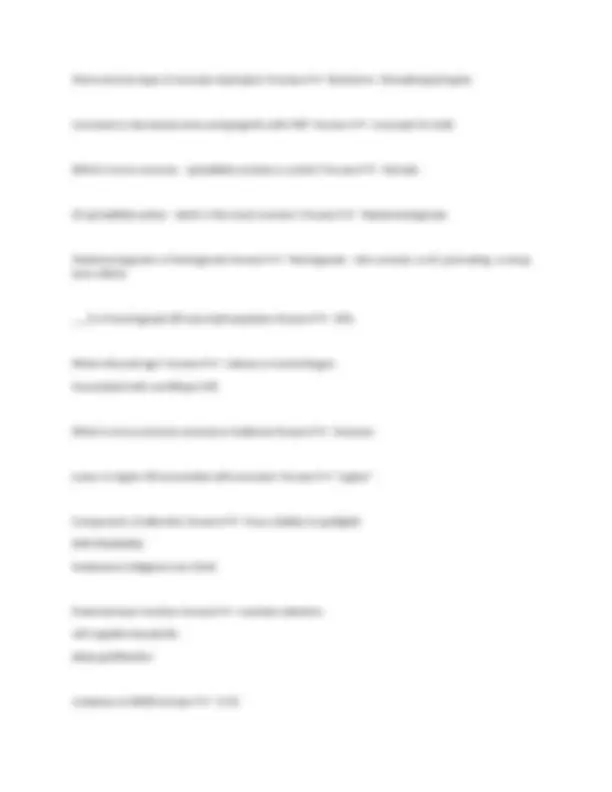
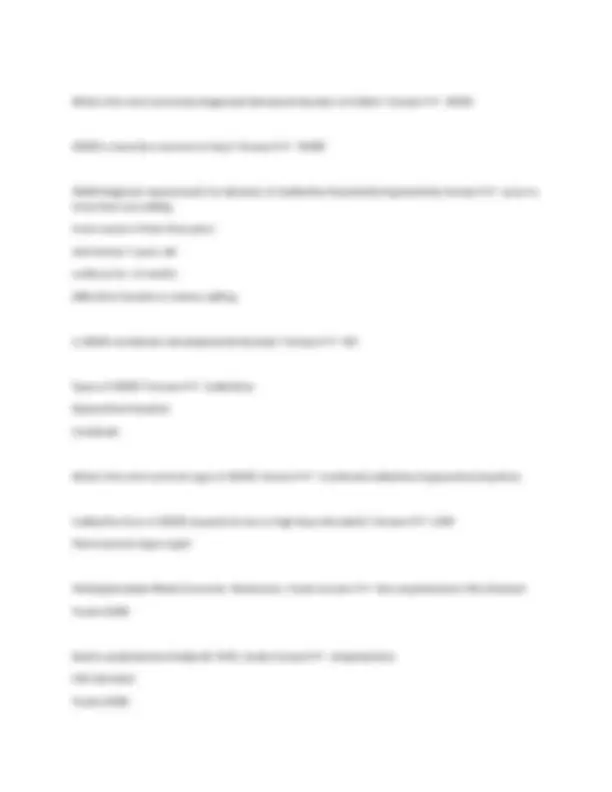
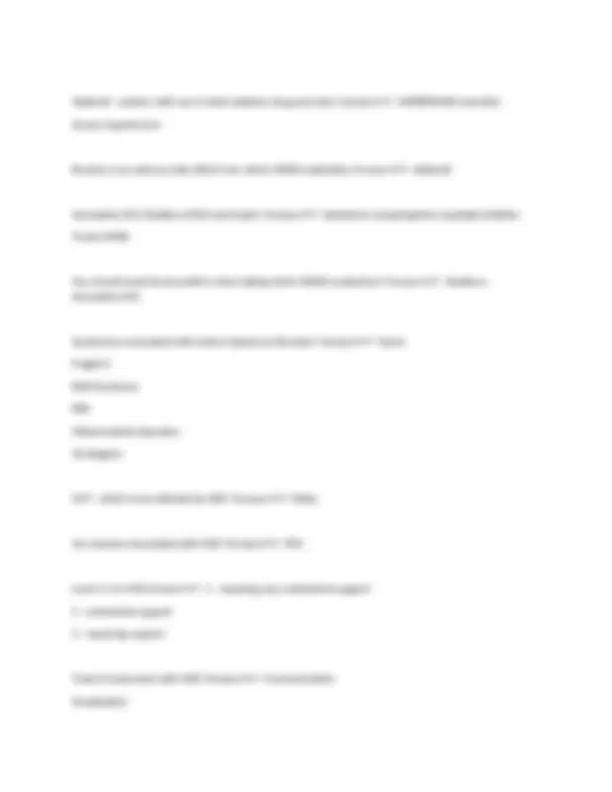

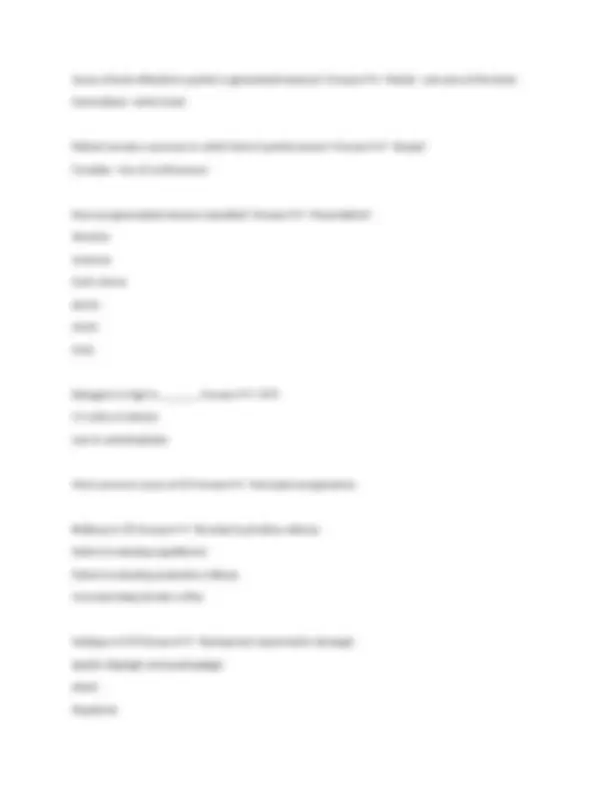
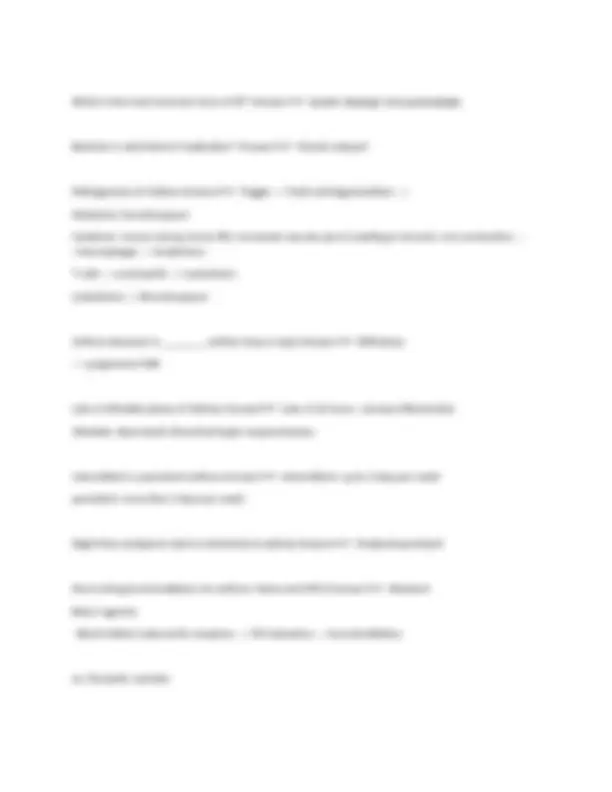
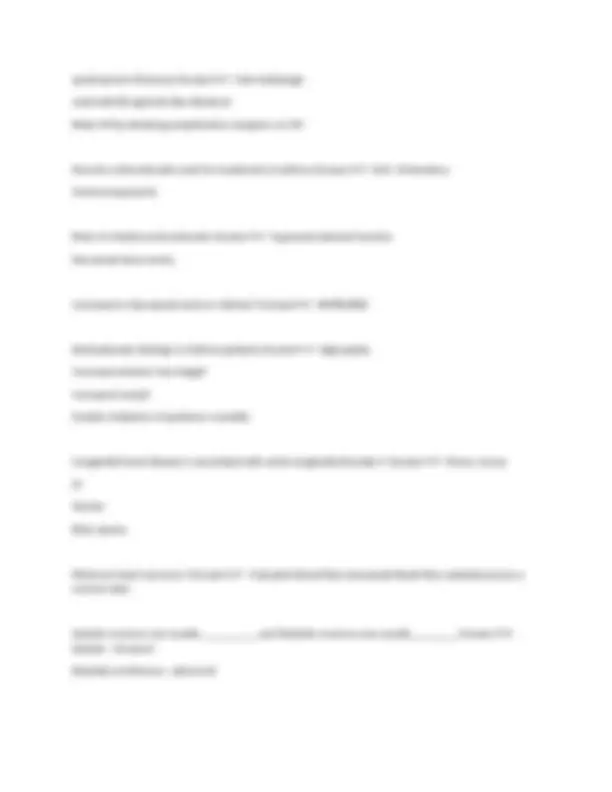
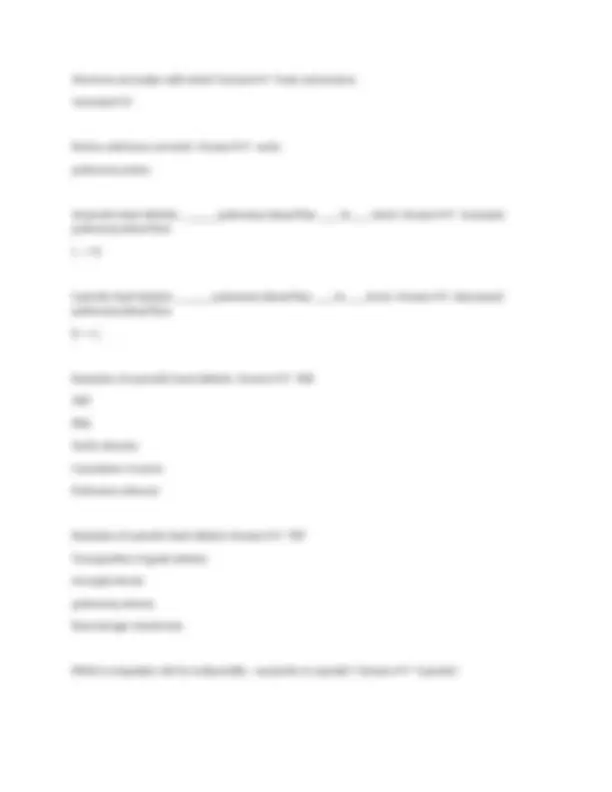
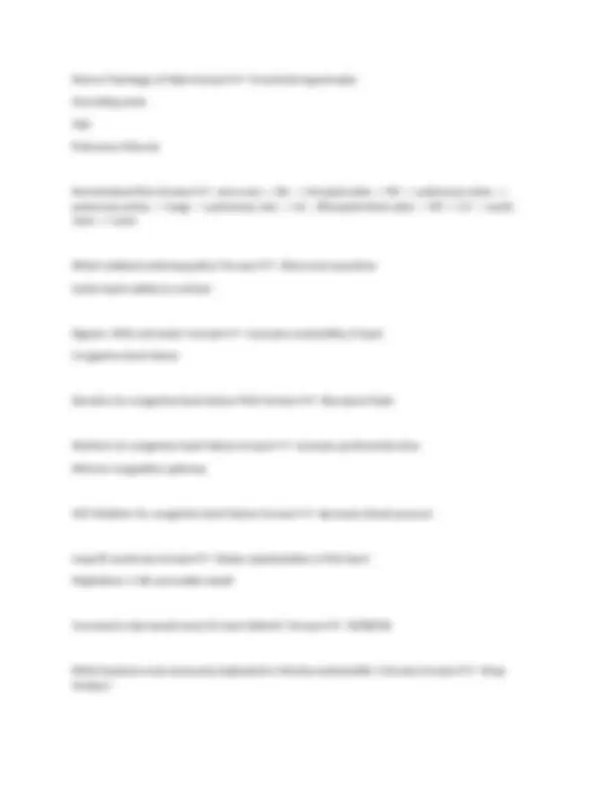
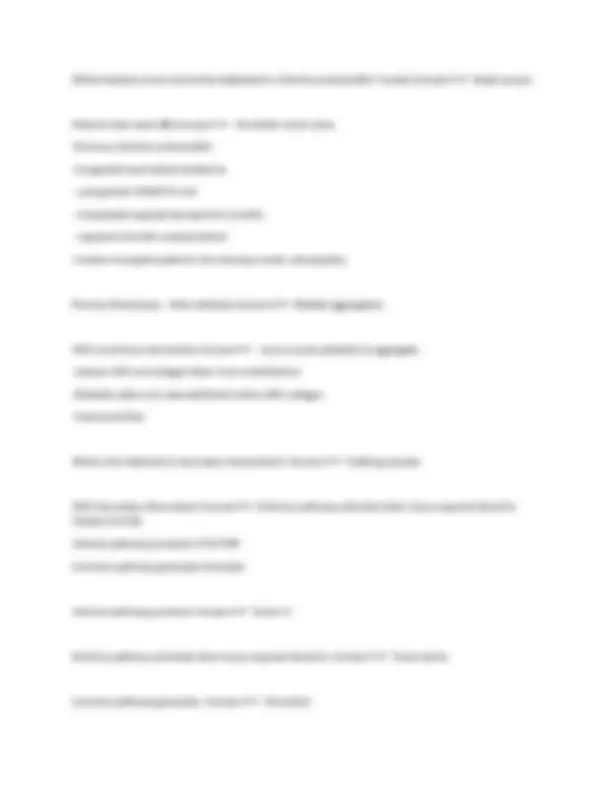
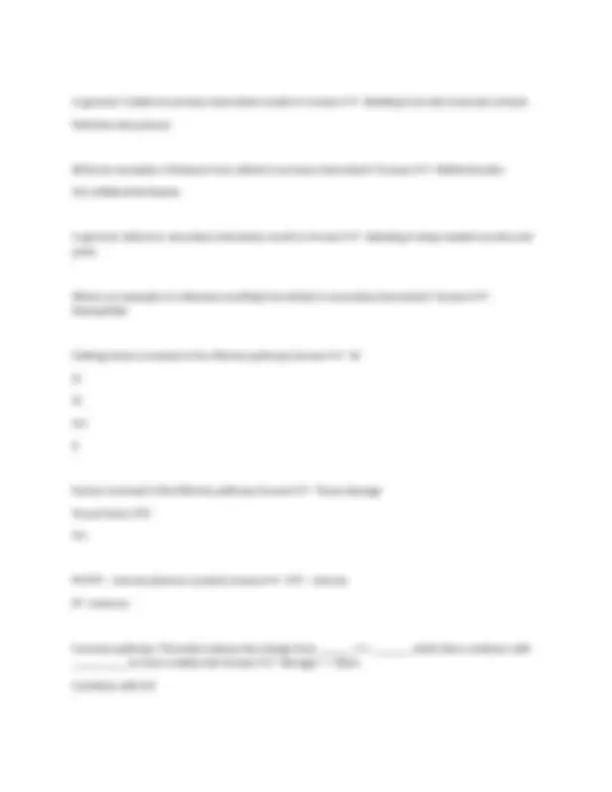

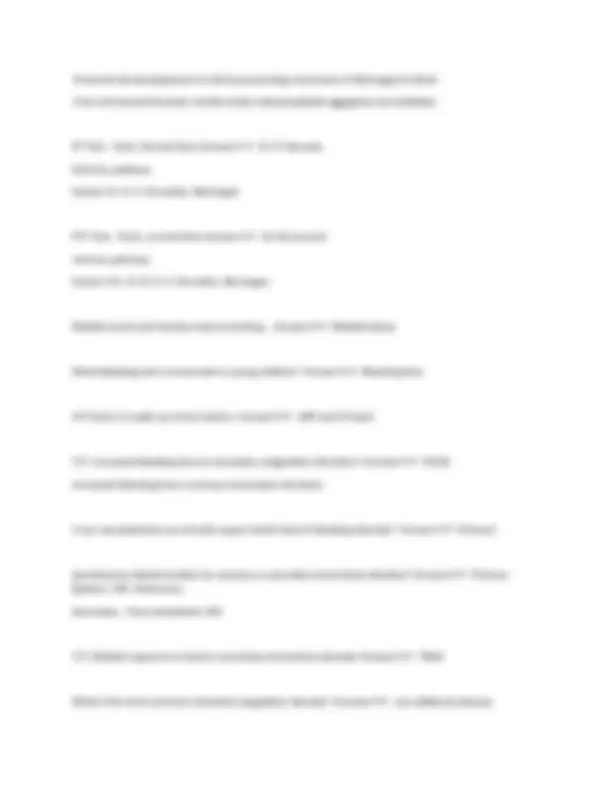

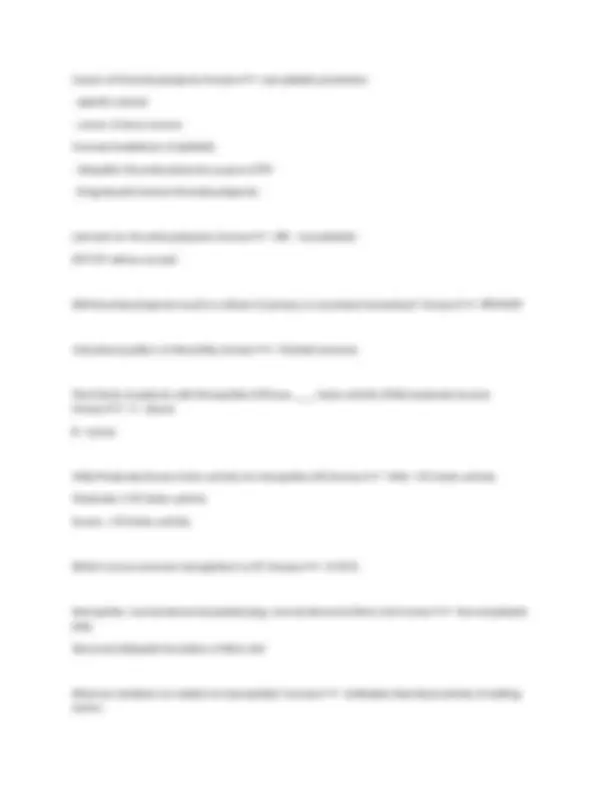
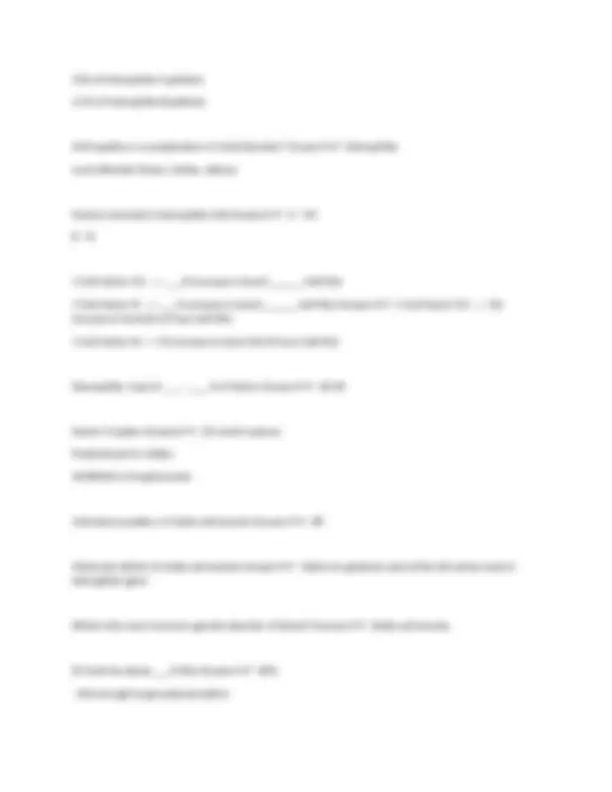
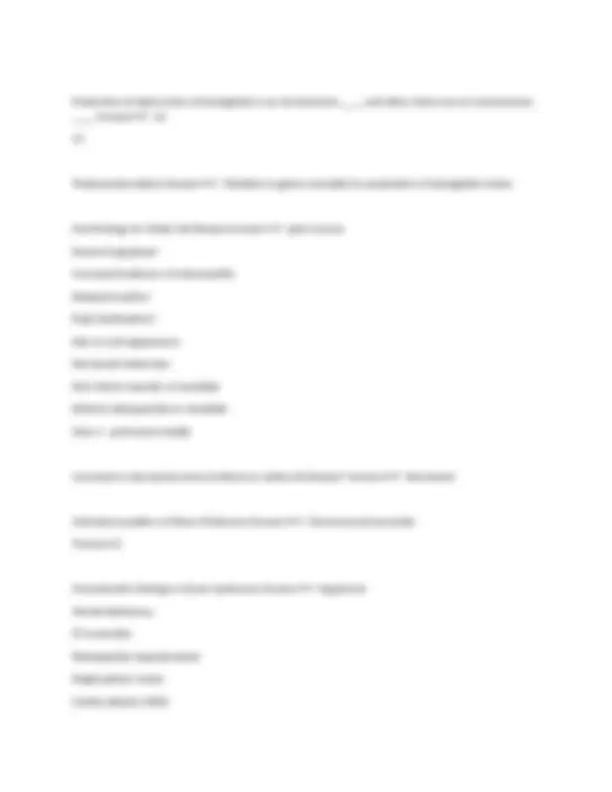
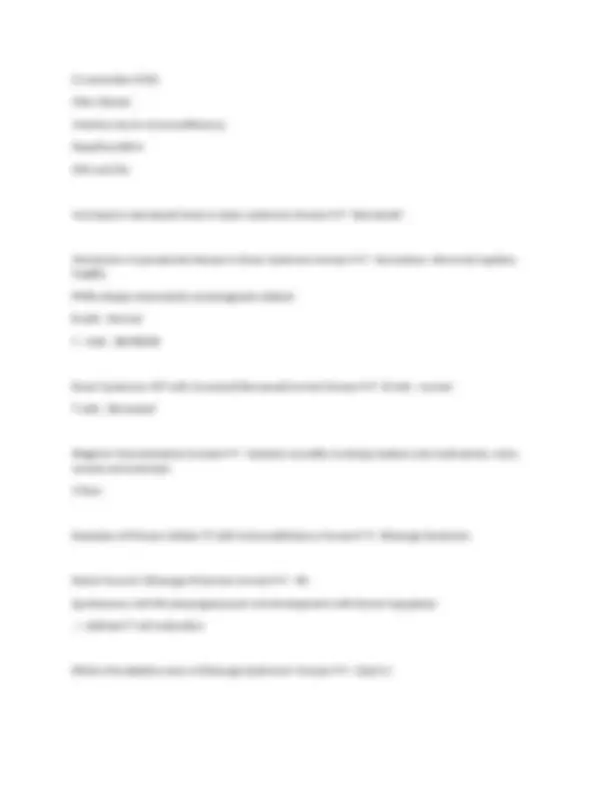
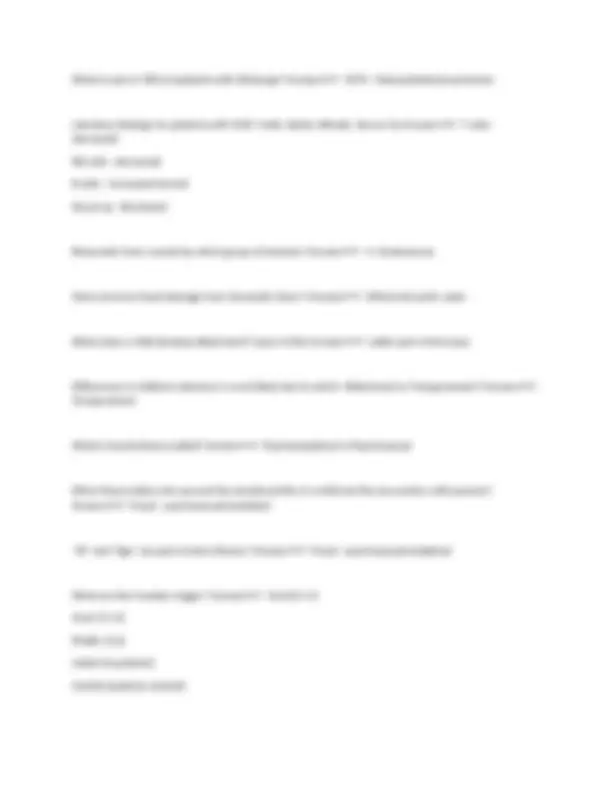
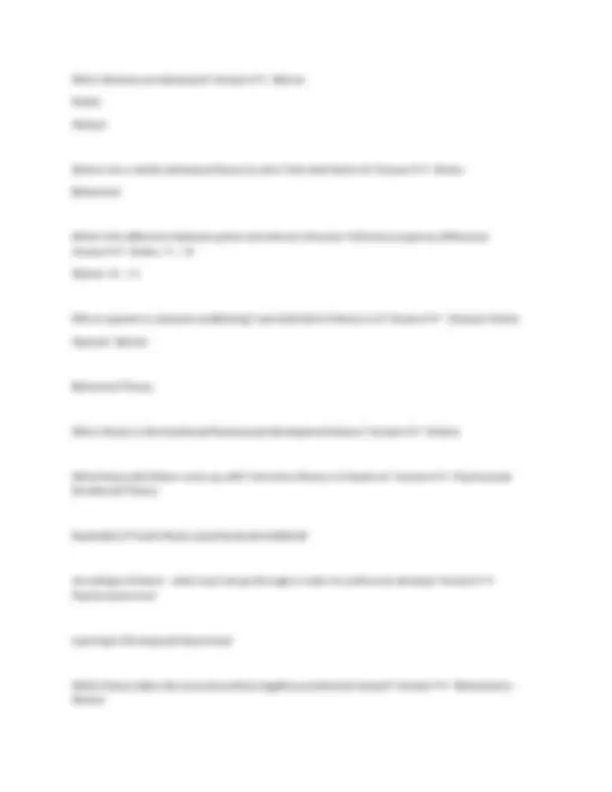
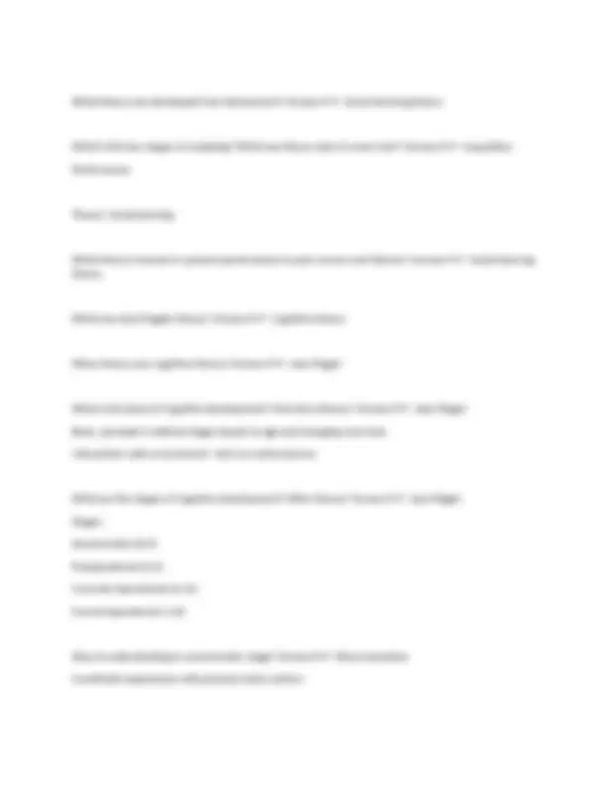
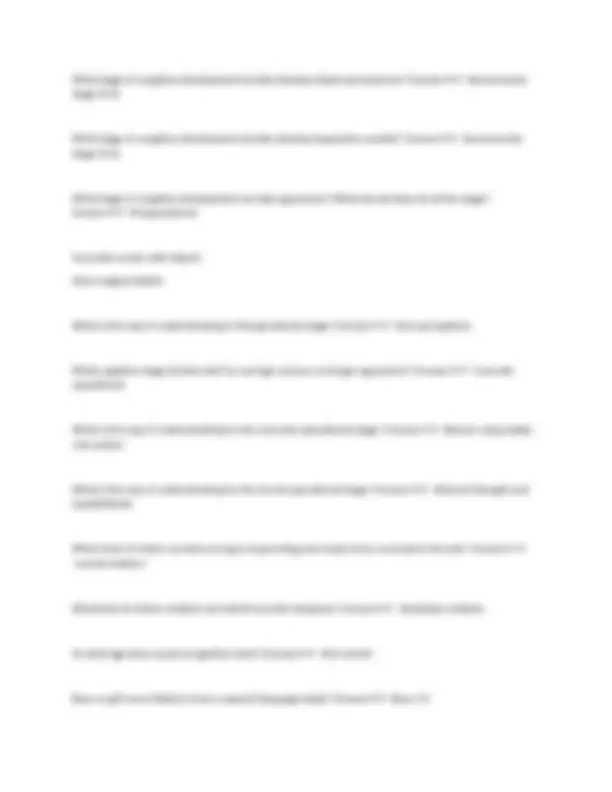
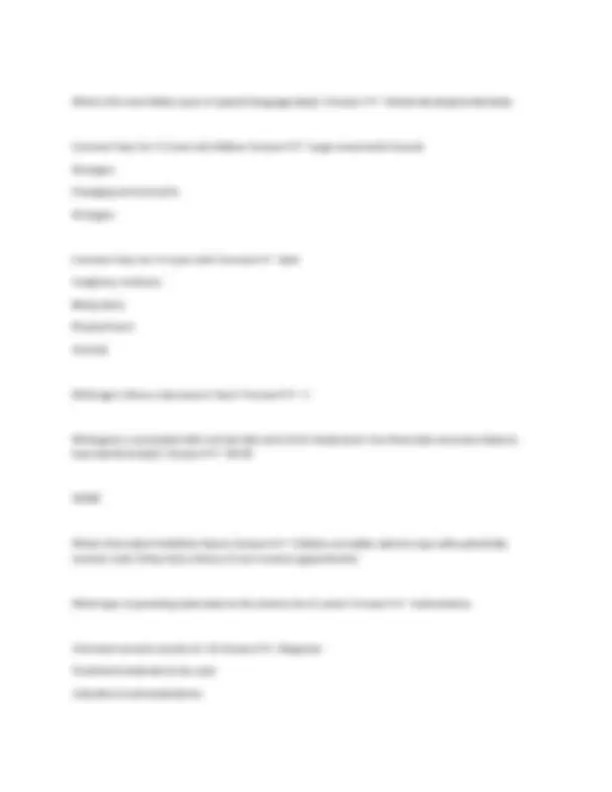
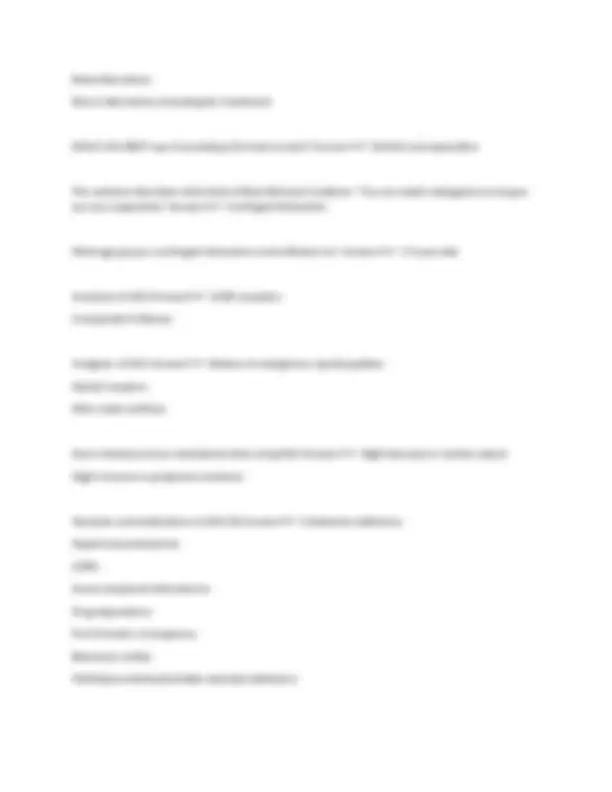


Study with the several resources on Docsity

Earn points by helping other students or get them with a premium plan


Prepare for your exams
Study with the several resources on Docsity

Earn points to download
Earn points by helping other students or get them with a premium plan
Community
Ask the community for help and clear up your study doubts
Discover the best universities in your country according to Docsity users
Free resources
Download our free guides on studying techniques, anxiety management strategies, and thesis advice from Docsity tutors
ABPD REVIEW EXAM 2024 WITH 100% CORRECT ANSWERS/ABPD REVIEW EXAM 2024 WITH 100% CORRECT ANSWERS/ABPD REVIEW EXAM 2024 WITH 100% CORRECT ANSWERS/ABPD REVIEW EXAM 2024 WITH 100% CORRECT ANSWERS/ABPD REVIEW EXAM 2024 WITH 100% CORRECT ANSWERS/ABPD REVIEW EXAM 2024 WITH 100% CORRECT ANSWERS
Typology: Exams
1 / 152

This page cannot be seen from the preview
Don't miss anything!





























































































Weeks at time of initiation? Answer✔✔- 6- Defect of initiation --> Answer✔✔- Supernumary teeth Missing (agenesis) of teeth % of supernumaries that erupt Answer✔✔- 25% Prevalence of supernumary teeth Answer✔✔- 0.1-3.8% LOWER in primary teeth 5x more common in permanent teeth __% of supernumaries are in the maxilla Answer✔✔- 90% Most common supernumary? Answer✔✔- Mesiodens Two kinds of supernumary teeth? Answer✔✔- Rudimentary Supplemental Syndromes associated with supernumary teeth? Answer✔✔- Hallerman-Streiff Apert's Oro-facial-digital syndrome Cleidocranial Dysplasia Gardern's Cleft palate
Sturge Weber Down syndrome Crouzons Incidence of congenital agenesis? Answer✔✔- 1.5-10% in Permanenet (<1% Primary) (more common than supernum) Most common congenitally missing tooth Answer✔✔- 3rd Molars Mandibular 2nd premolars Maxillary Laterals Maxillary 2nd Premolars Syndromes associated with tooth agenesis Answer✔✔- Cleft palate Ectodermal dysplasia Downs Ellis van Crevald (Chondroectodermal dysplasia) Oro-Facial-Digital Hallerman-Streiff Crouzons Clinical symptoms of Oro-Facial-Digital Answer✔✔- Missing/asymmetry with digits Think frenal attachments Anomalous anterior teeth Hypoplasia of alar cartilage Syndromes that manifest as Hypo and Hyperdontia Answer✔✔- Hallerman Streiff
(Defects in form/shape) Most common tooth for dens in dente Answer✔✔- Maxillary permanent lateral incisor Most common tooth for dens evaginatus Answer✔✔- Common in Max incisors Laterals 50% Centrals 30% (Most in PERM) Dens evaginatus associated with what syndromes? Answer✔✔- Sturge webber Rubinstein - Taybi Syndrome Syndromes associated with Taurodontism? Answer✔✔- Klienfelter's Ectodermal dysplasia Down syndrome Hypotrichosis Oro-facial-Digital Syndrome Amelogenesis Imperfecta Lit: Are missing teeth and/or supernumary teeth assocaited with taurodontism? Answer✔✔- Missing teeth ARE related Supernumary are NOT related Dilaceration is associated with what syndrome? Answer✔✔- Congenital Ichthyosis Apposition defects? Answer✔✔- Dentin Dysplasia I Dentin Dysplasia II Regional odontodysplasia
DDI/DDII/Regional odontodysplasia - AD/AR/Non hereditary Answer✔✔- DDI - AD DDII - AD Regional Odonto. - Non-Hereditary Regional Odontodysplasia is associated with what? Answer✔✔- RH factor incompatibility Hypophosphatasia Ectodermal Dysplasia Defects in Calcification/Mineralization Answer✔✔- AI Type III (hypocalcified) Flurosis Defect in Proliferation: Answer✔✔- Macro micro fusion gemination Defect in Histodifferentiation Answer✔✔- AI DI Defect in morphodifferentiation Answer✔✔- Dens indente/evag/taurodontism/dilac Defect in apposiition? Answer✔✔- Dentin dysplasia Regional odontodysplasia Dentin dysplasia results from a defect in _______ Answer✔✔- Apposition Regional odontodysplasia results from a defect in _______ Answer✔✔- apposition
ellis van crevald (chondorocetodermal dysplasia) Oro-facial-digital Crouzons achondroplasia William syndrome Reiger syndrome Hallerman streif Down syndrome What is the Lyon hypothesis> Answer✔✔- X chromosome inactivation X linked disorders --> women show lesser phenotype since there is less penetrance since they have 2 X's What is the inheritance pattern of microdontia Answer✔✔- Autosomal dominant incomplete penetrance Condition with microdontia Answer✔✔- Ectodermal dysplasia chondroectodermal dysplasia Down Crouzons Pituitary dwarfism Conditions with MACROdontia Answer✔✔- Crouzons hemifacial HYPERtrophy otpdental syndrome XYY Pituitary gigantism Pineal hyperplasia with hyperinsulinemia What is the most common tooth affected by dens indente? Answer✔✔- maxilary lateral
Evagination of what structure results in dens indente? Answer✔✔- IEE Dens evaginats types: Answer✔✔- I: talon II: Semitalon III: trace talon What syndrome is associated with dens evaginatus? Answer✔✔- Rubinstein-Taybi syndrome What syndromes with taurodontism? Answer✔✔- Klienfelters (XXY) Trichondento-osseous OFD II (mohr) Ectodermal dysplasia AI IV Down William Smither magenis IN DI Shileds I which dentition is mroe affected? Answer✔✔- Primary What pulp findings are seen in DI Type I Answer✔✔- Pulp obliteration What enamel defect is seen in EB patients Answer✔✔- (junctional type) Enamel hypoplasia Vitamin deficiency in A,C,D, calcium, phosphate, fluoride can all result in what tooth defect? Answer✔✔- enamel hypoplasia What tooth defect can be seen in syphils, rubella, Rh incompatibilit Answer✔✔- Enamel hypoplsia
celiac disease Prematurity idiopathic failure of eruption diabetes Type 1 vs type 2 failure of eruption Answer✔✔- 1: failure around the same time for all teeth affected and then ALL teeth distal effected 2: gradient over time, some distal teeth affected Familial failure to erupted associated with what gene? Answer✔✔- PTH1R Disease of bone (2) that result in premature exfoliation Answer✔✔- Vitamin D resistant rickets Fibrous dysplaisa Order of ankylosed teeth primary Answer✔✔- Mand D Mand E Max D Max E Causal Study Answer✔✔- Investigates the effect of one or more variables on one or more outcome variables Ex: Higher juice concentration --> higher caries rate Relational Study Answer✔✔- Investigates the connection between two or more variables (Variables usually already present in population) Ex. Male vs female - who would use whitening toothpaste
Descriptive Study Answer✔✔- Research seeks to depict what already exists in a group/population (Exploratory) Prospective Studies Answer✔✔- start the study with identification of population and exposure status --> follow them to look for development of disease Retrospective study Answer✔✔- Uses existing data collected to identify the population and exposure status Cross Sectional Study Answer✔✔- Observational Exposure and disease are determined at the same point in time (Usually retrospective) Prevalence! Case Control Answer✔✔- Observational study in which characteristics of people with disease (case) are compared to those without the disease (controls) (Usually retrospective) Cohort study Answer✔✔- Best at determining the incidence and natural history of condition (not good at cause/effect) Controlled Trial Answer✔✔- Experimental Study Interventions is applied to one Group and outcome compared to a similar group (controls) not receiving intervention Case Series (Clinical Trial) Answer✔✔- Descriptive Study Tracks patients with known exposure given similar treatment ex. Carious teeth treated with pulpotomy
interval Answer✔✔- Categories are arranged in equally spaced units and relative difference between each can be measured ex. temperature/O2 saturation Ratio Answer✔✔- Absolute zero points exist, magnitude of difference between untis is the same ex; age Reliability is a term used for ______ Answer✔✔- consistency Incidence vs. Prevalence Answer✔✔- Incidence: change in status from non disease to disease Prevalence: includes new and past cases that are still surviving Sensitivity Answer✔✔- True positive rate Probability that a test will indicate disease among those with disease Specificity Answer✔✔- True Negative rate Fraction of those without disease that will have a negative test Positive Predictive Value Answer✔✔- Probability that subjects with a positive screening test truly have the disease Negative Predictive value Answer✔✔- probability that subjects with negative screening test truly dont have the disease Recall Bias Answer✔✔- occurs when recall is better among cases (disease) than controls because of the presence of disease
Selection bias Answer✔✔- selected participants into expose and non expose groups based on some characteristics that may effect the outcome Information Bias Answer✔✔- collect different quality and extent of informatino from exposed group vs non exposed groups Goals of Sedation Answer✔✔- 1. Guard patients safety and welfare (psyche)
Restricted oral opening Short neck Limited flexion (atlanto-axial) Increased airway resistance increases _____x power of airway diameter Answer✔✔- 4! ex. 1mm decrease in bronchiole diameter --> 16x increase in airway resistance Pediatric airway Answer✔✔- Increased resistance to 4th power Vocal cords are cephalad and anterior Tapered upper airway -Cricoid is smallest Larger head:body ratio Patient selection: CV/Respiratory considerations Answer✔✔- Pediatric airway physiology Brodsky classification History of RSV CV system Brodsky Classification (%'s) Answer✔✔- 1: <25% 2: 25-50% 3: 50-75% 4: >75% Tonsils and Airway patency Can lead to CO2 retention Mallampati classification Answer✔✔- For OR intubation Measure uvula and soft palate
does NOT refer to CO2 retention, airway, or tonsilts Normal Respiratory rate: <1 Year _____ 1-2 Years ___ 3-5 Years____ 6-10 Years____ Answer✔✔- <1 Year - 30- 1-2 Years - 30- 3-5 Years 20- 6-10 Years 16- What OTC meds inhibit cyctochrome p450? Answer✔✔- Ecchinasia and st. johns wart What OTC medications inhibit attachment to p450 via competition (documented with Midazolam)? What does it lead to? Answer✔✔- Erythromycin and Cimetidine (Zantac) Decreases hepatic clearance Decreased ventilation (hypoventilation) --> Metabolic _________ Answer✔✔- Acidosis (because of accumulated CO2) Vocal cords are more ______ and _____ in children Answer✔✔- cephalad and anterior What is the name of the maneuver to move the vocal cords to make intubation easier? Answer✔✔- Sellick Maneuver What is the smallest part of the pediatric airway? Answer✔✔- cricoid cartilage The pediatric heart is a ______ dependent pump Answer✔✔- rate CO = HR
-heart rate -oxygen saturation Which component of the respiratory system is affected by sedation drugs? Answer✔✔- Ventilation PRIMARY Involuntary ventilation control is in the _________ and is sensitive to _________ vs SECONDARY Involuntary ventilation control is in the _________ and is sensitive to _______ Answer✔✔- Medulla -Arterial CO2 tension (PaCO2) Carotid Bodies -Sensitive to 02 Involuntary Control of Ventilation Answer✔✔- Sleep Drug induced sedation Unconciousness Exceptions to the backup role of the carotid bodies Answer✔✔- COPD Central chemo sensitive area depressed by sedative drugs Voluntary ventilation is controlled by the_____ Answer✔✔- Cerebral Cortex _______ Is the primary breathing muscle in children Answer✔✔- Diaphragm In adults just doinant Child tidal volume Answer✔✔- 5-7 ml/kg
Children have a functionally ________ FRV (Functional residual volume) Answer✔✔- Decreased! Childrens lungs are _______ than adults Childrens chest walls are _______ complaint Answer✔✔- Stiffer -Decreased elastic recoil MORE If a sedated pediatric patient has a blocked upper airway you will see: Answer✔✔- Rocking motion (See saw) of chest and stomach Will also see retractions Pediatric Heart: is _______ and therefore ____ compliant. Answer✔✔- Stiffer Less Also: NO collateral circulation CO of a child is ____X than that of an adult Answer✔✔- 2X If a child aspirates, it will typically go into which lung? Answer✔✔- Right Straighter Normal Breath sound ratio of Inspiration: Expiration Vesicular